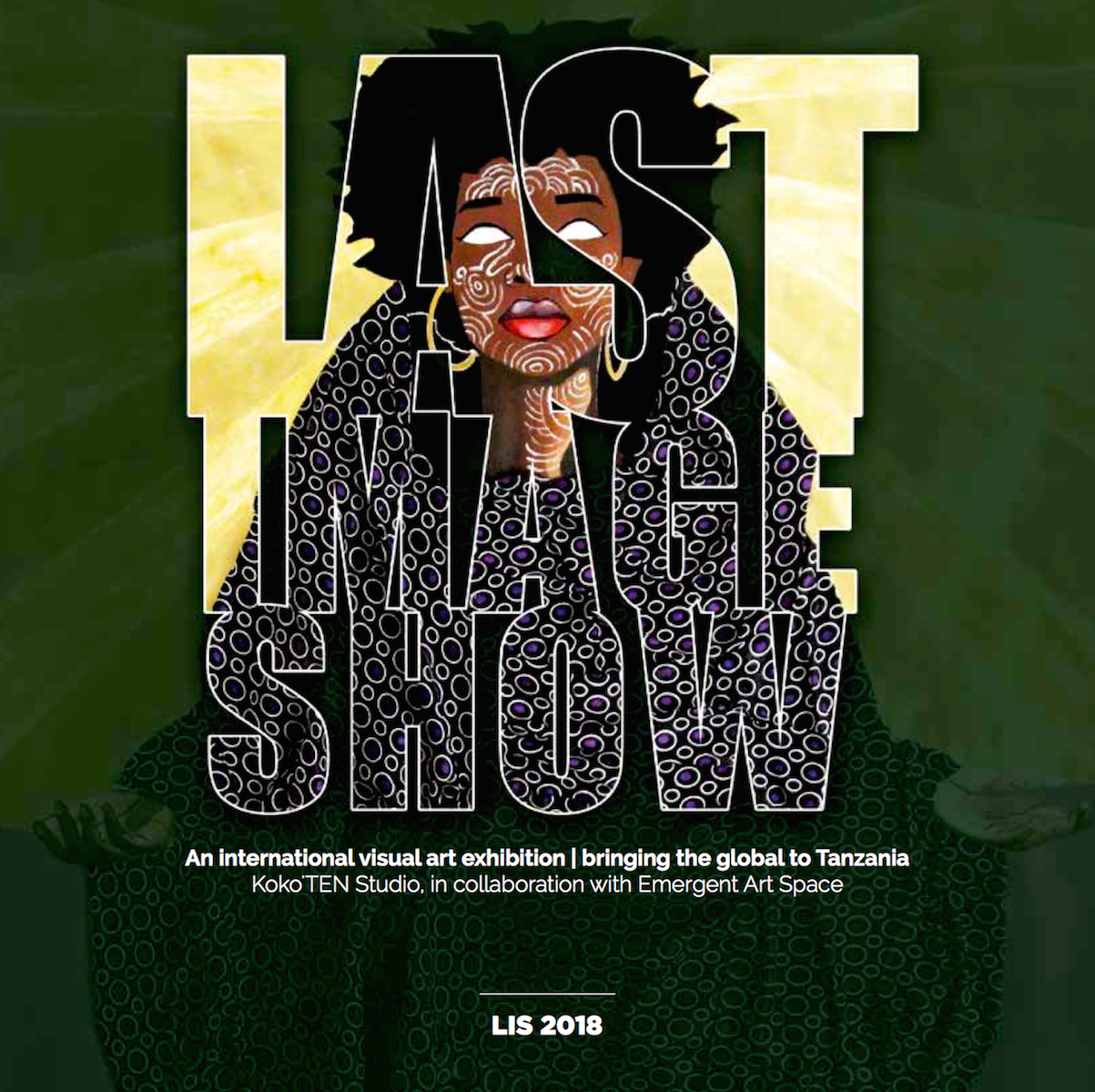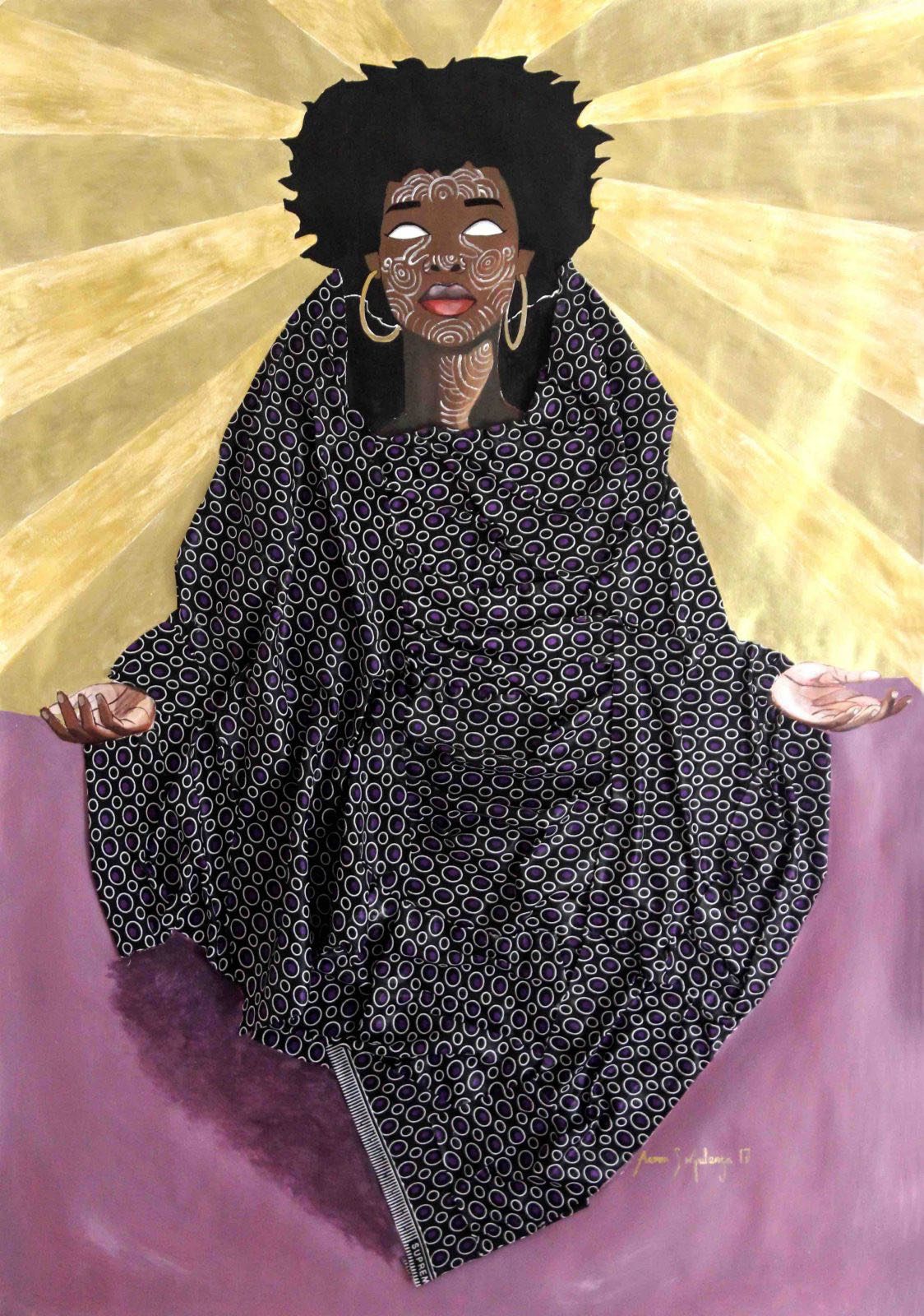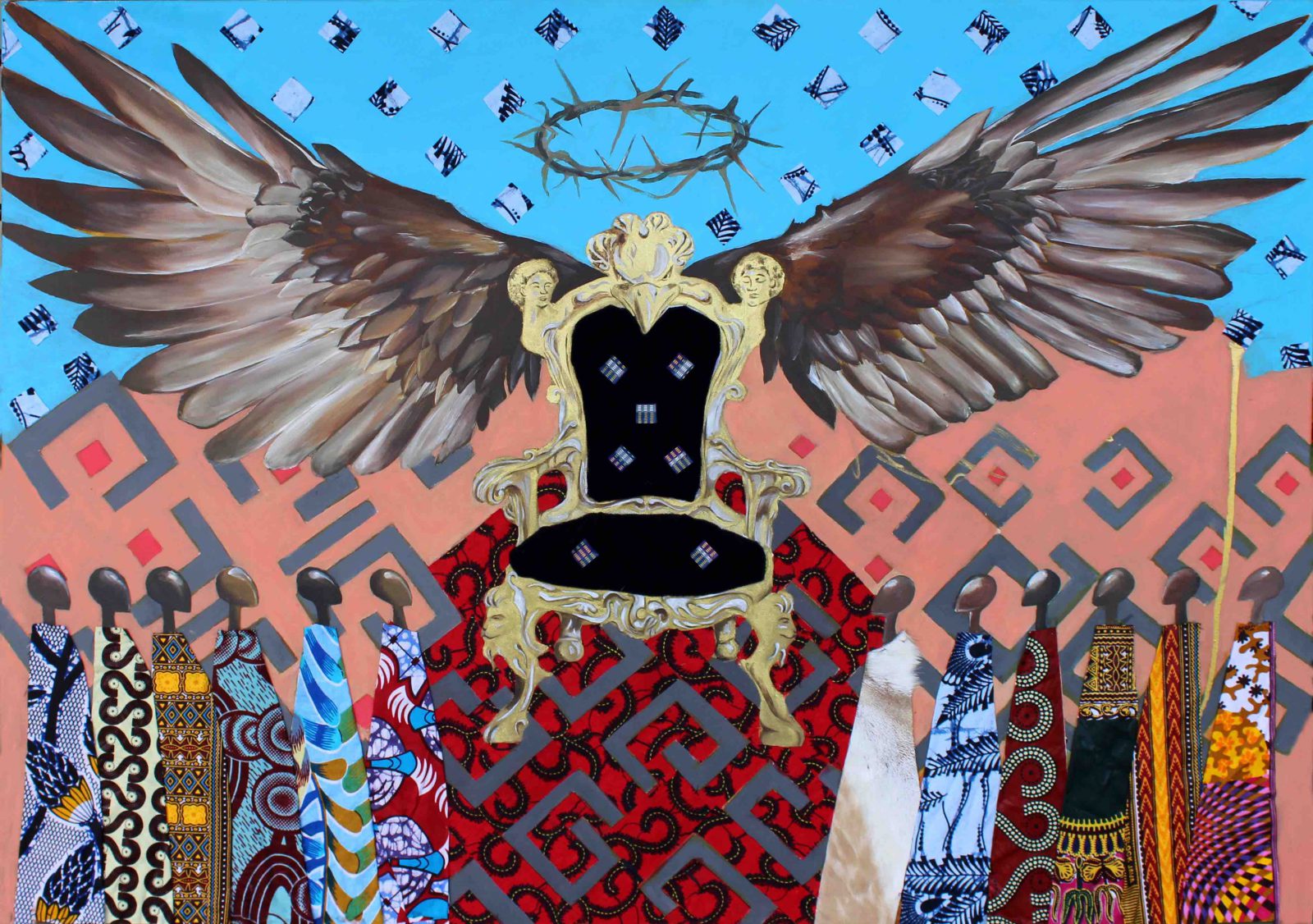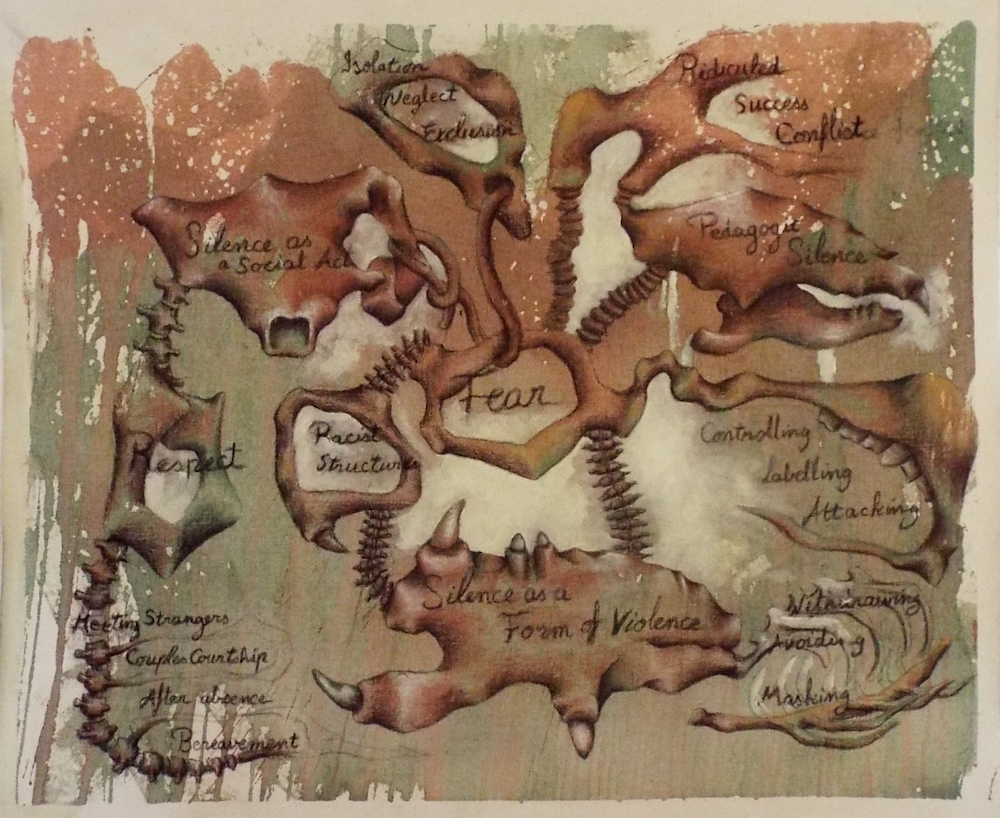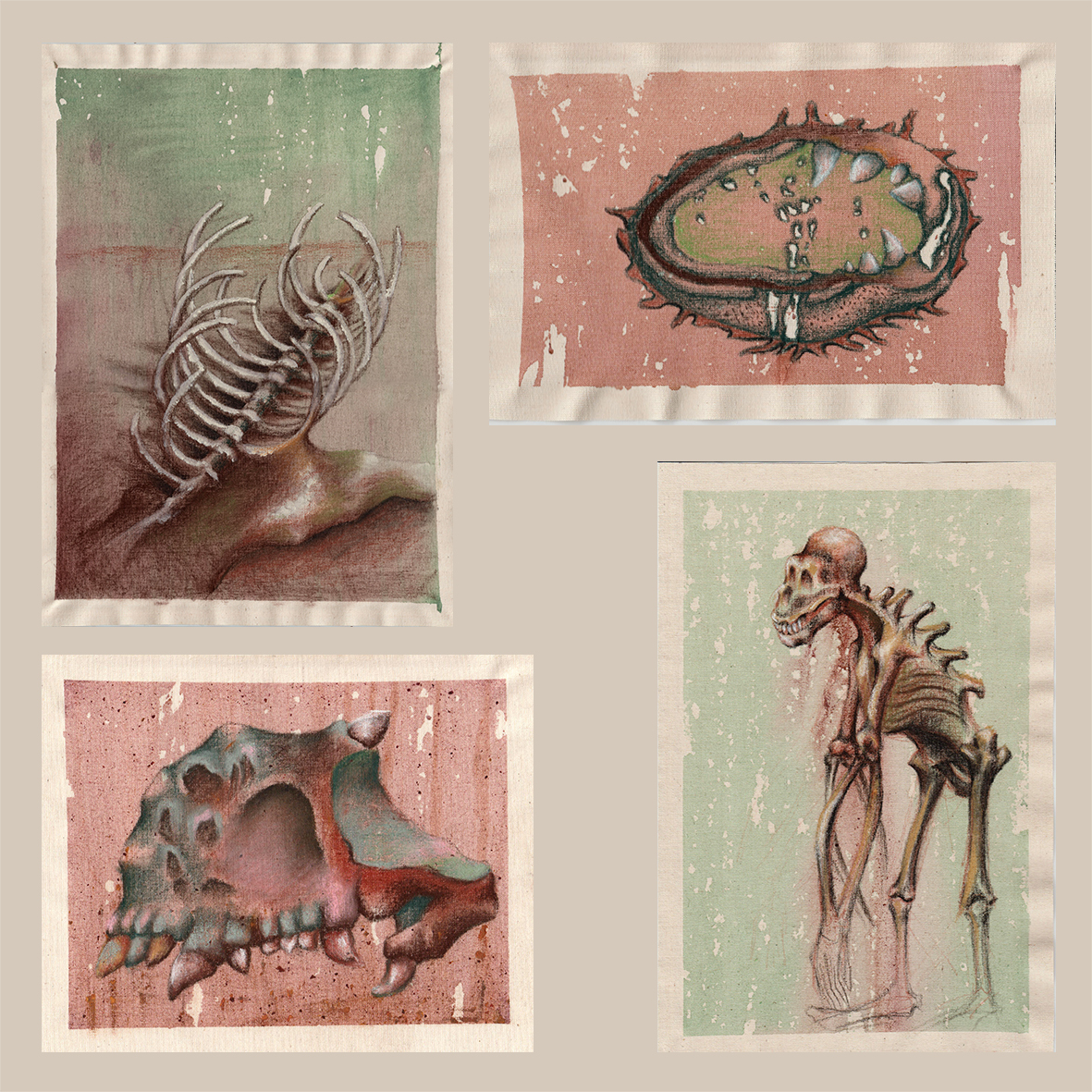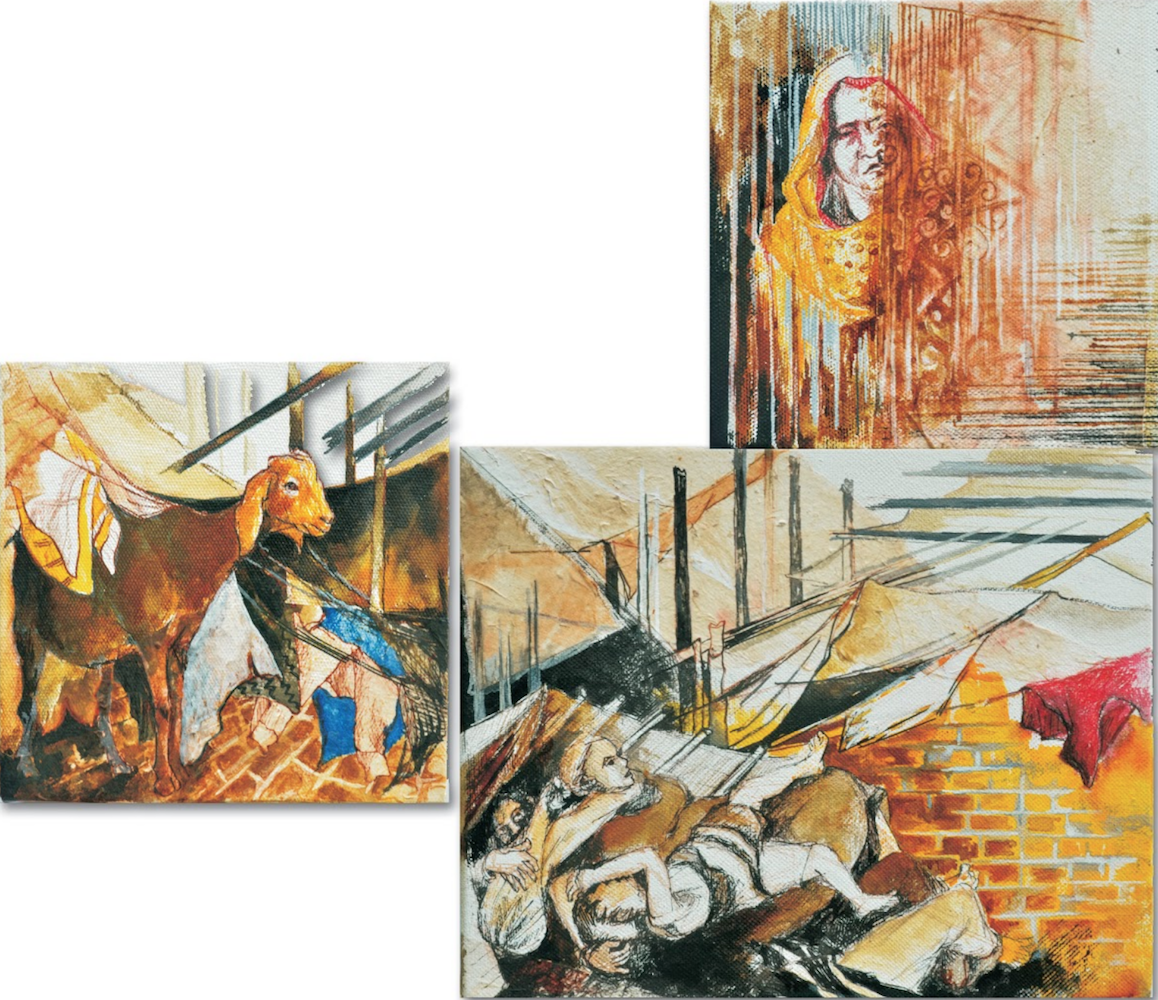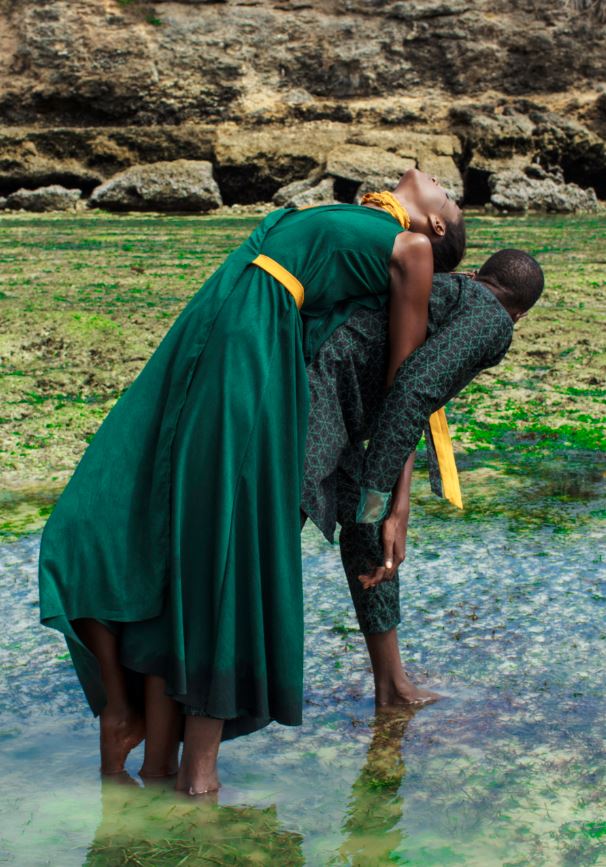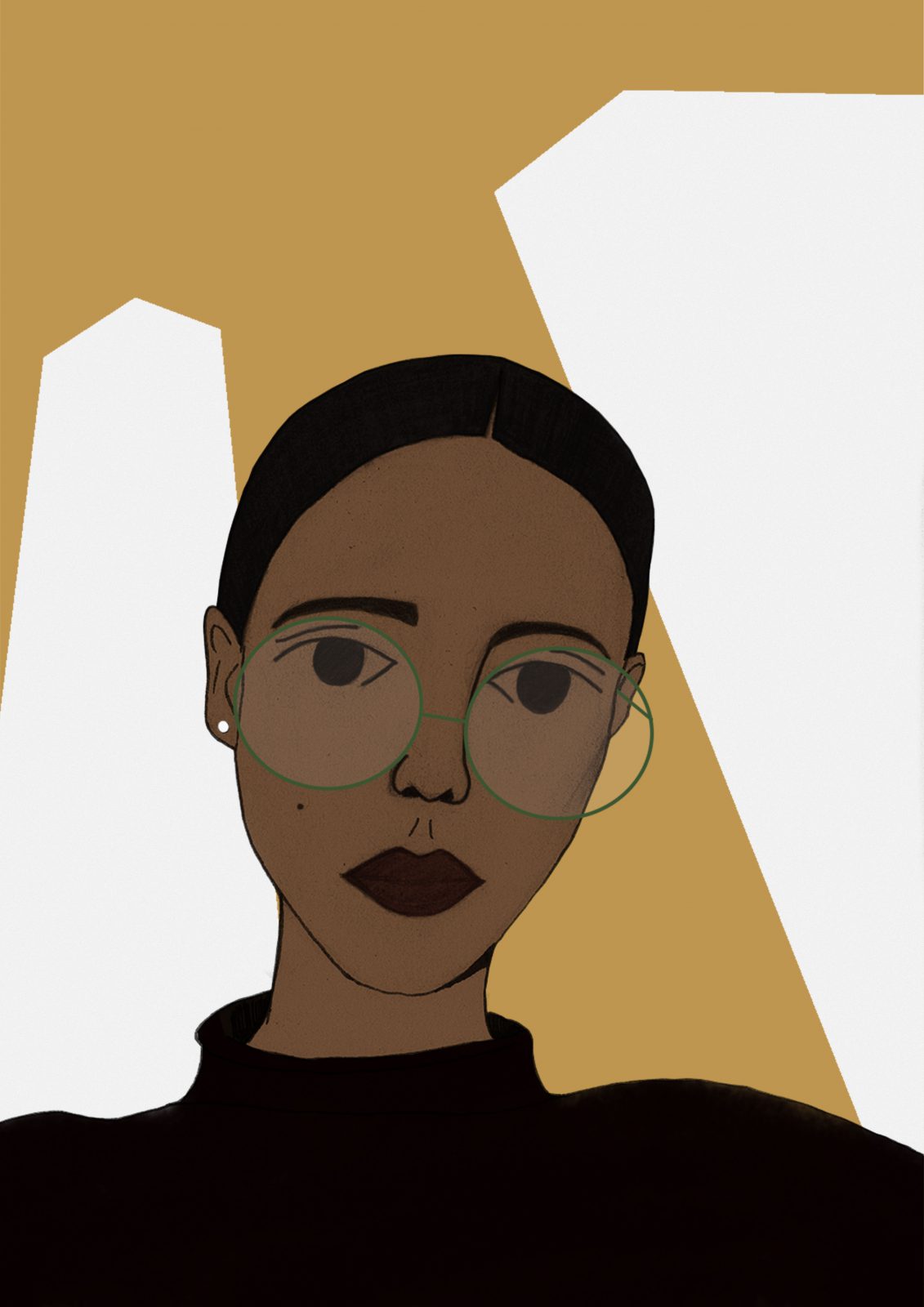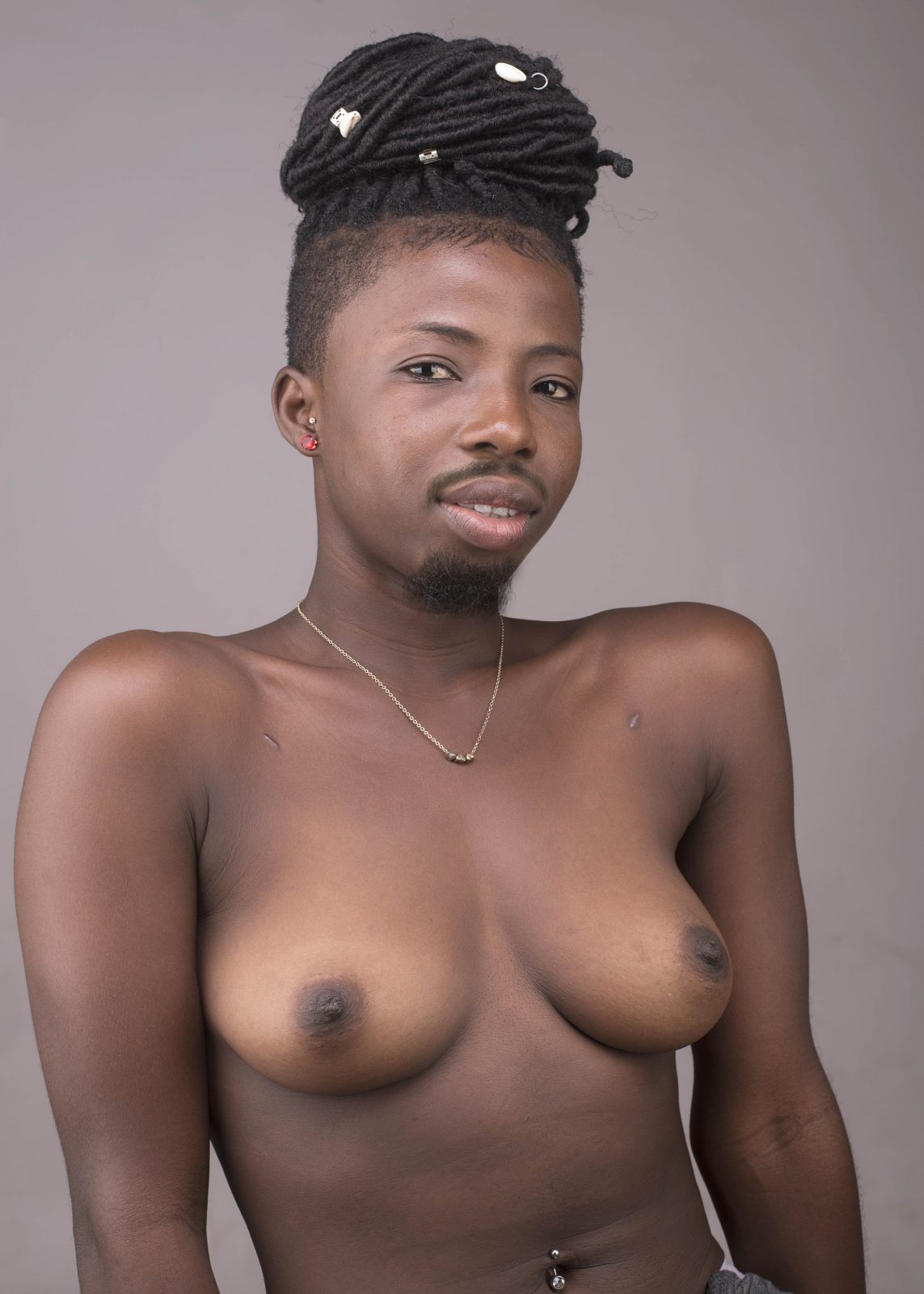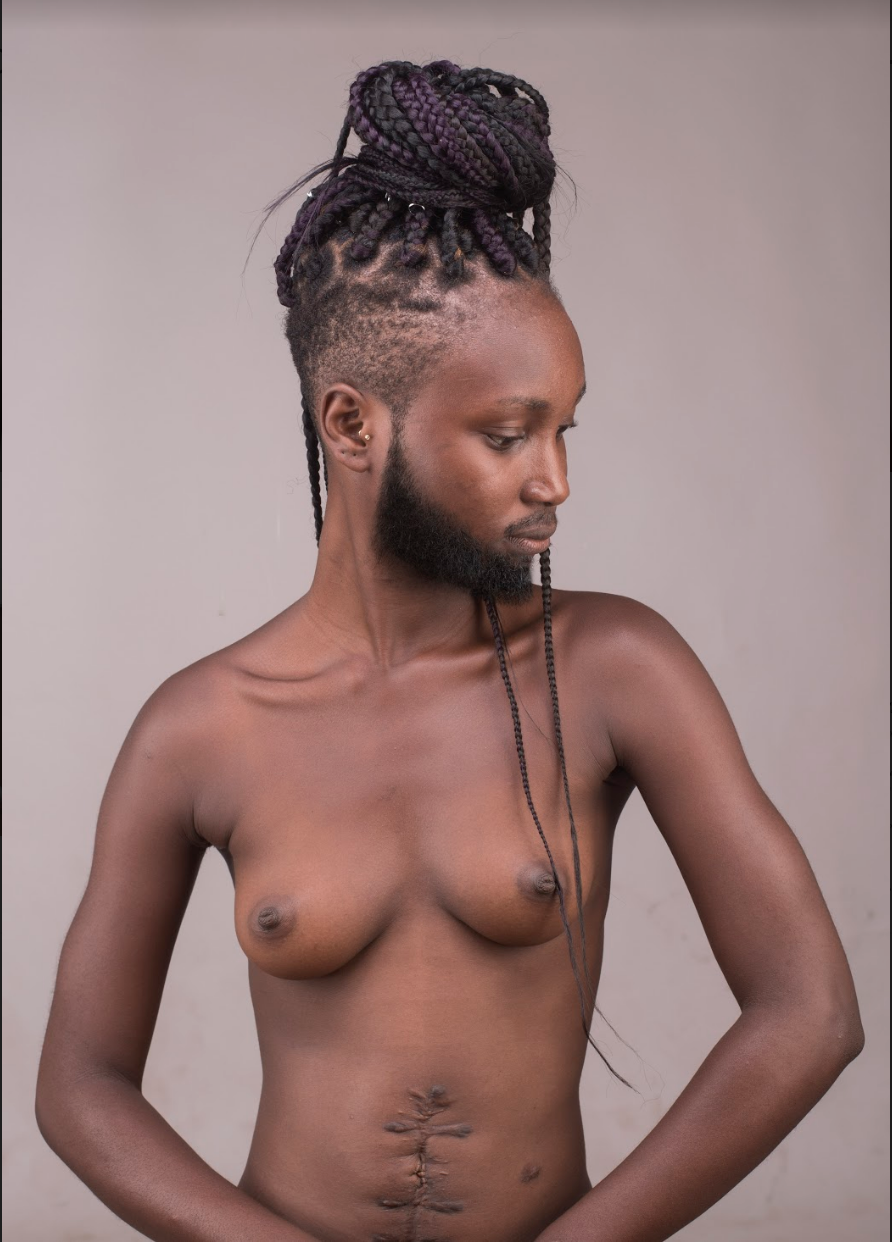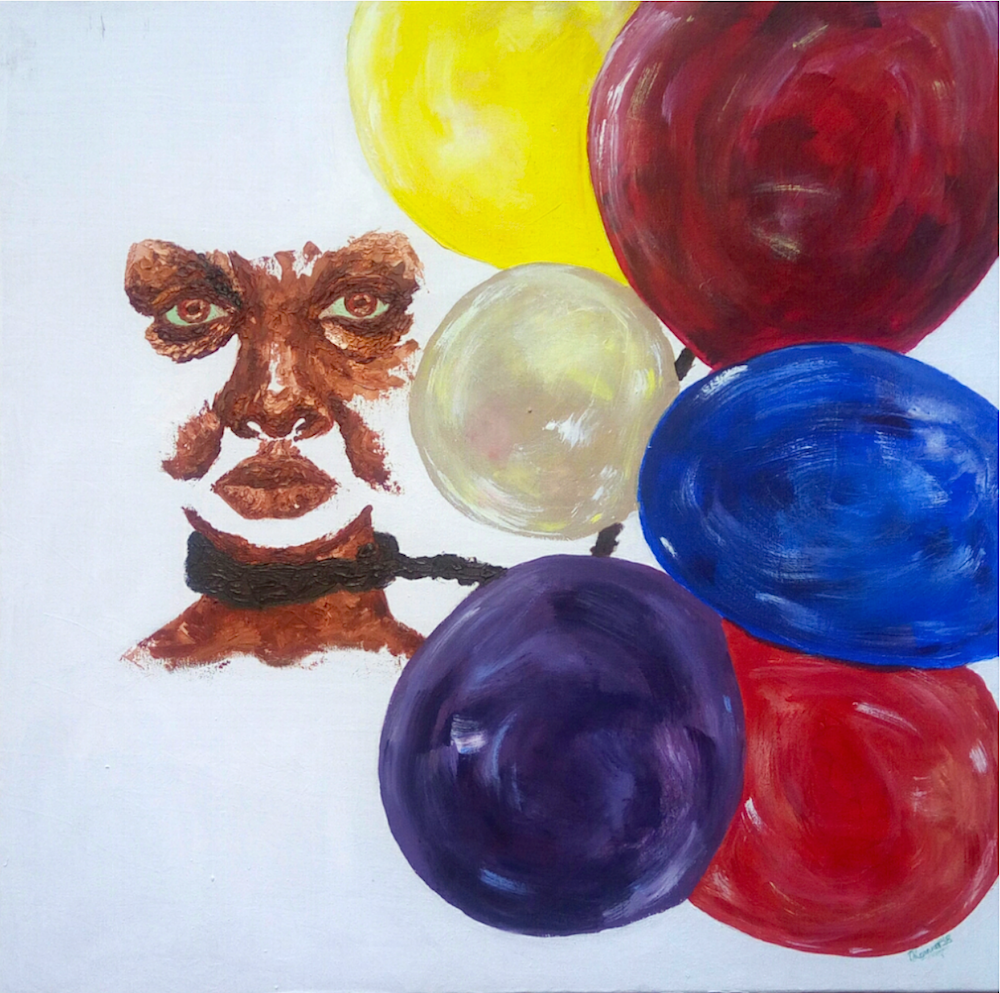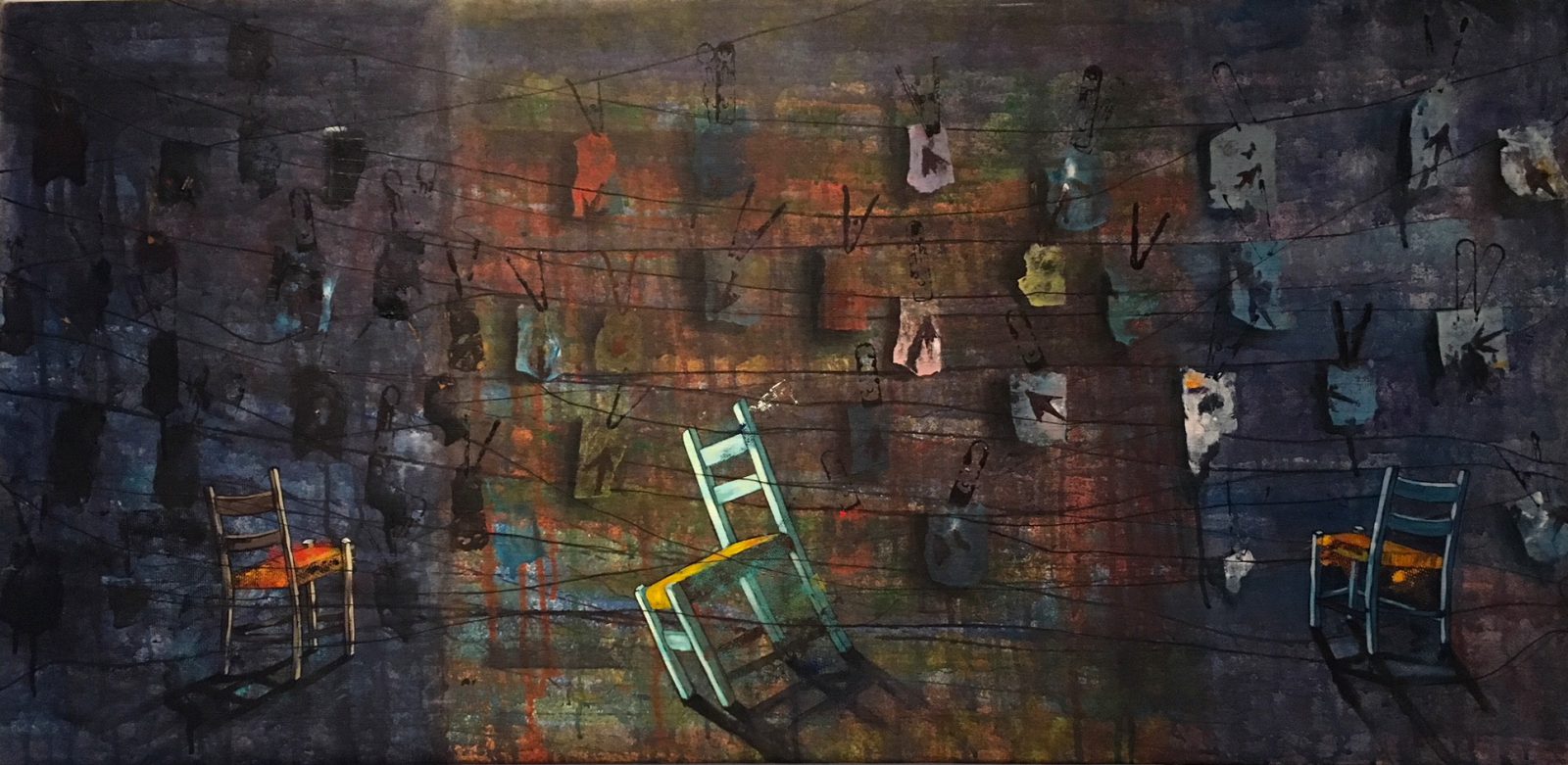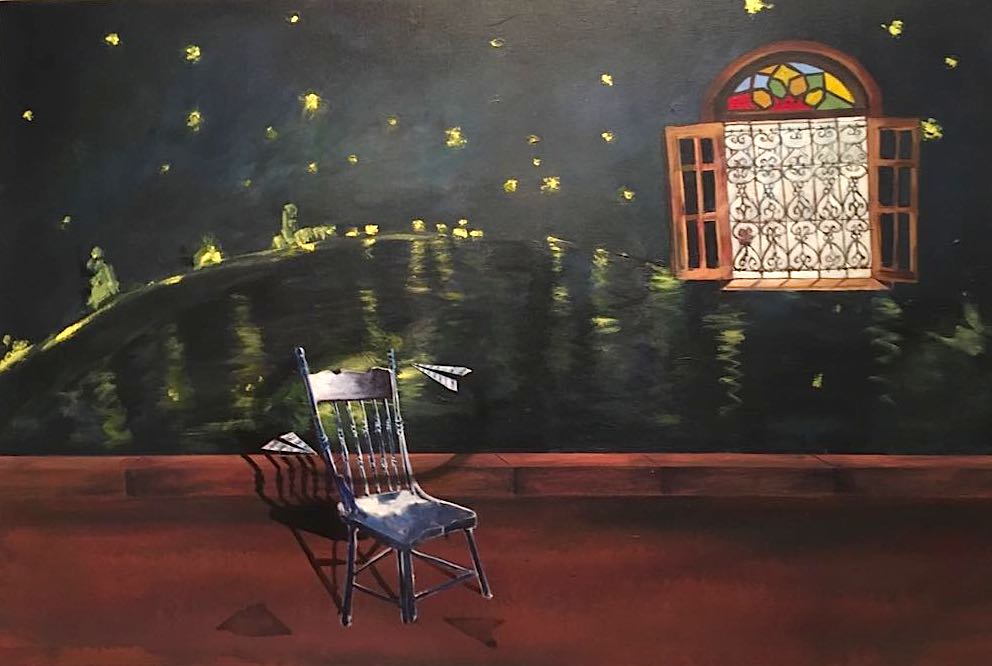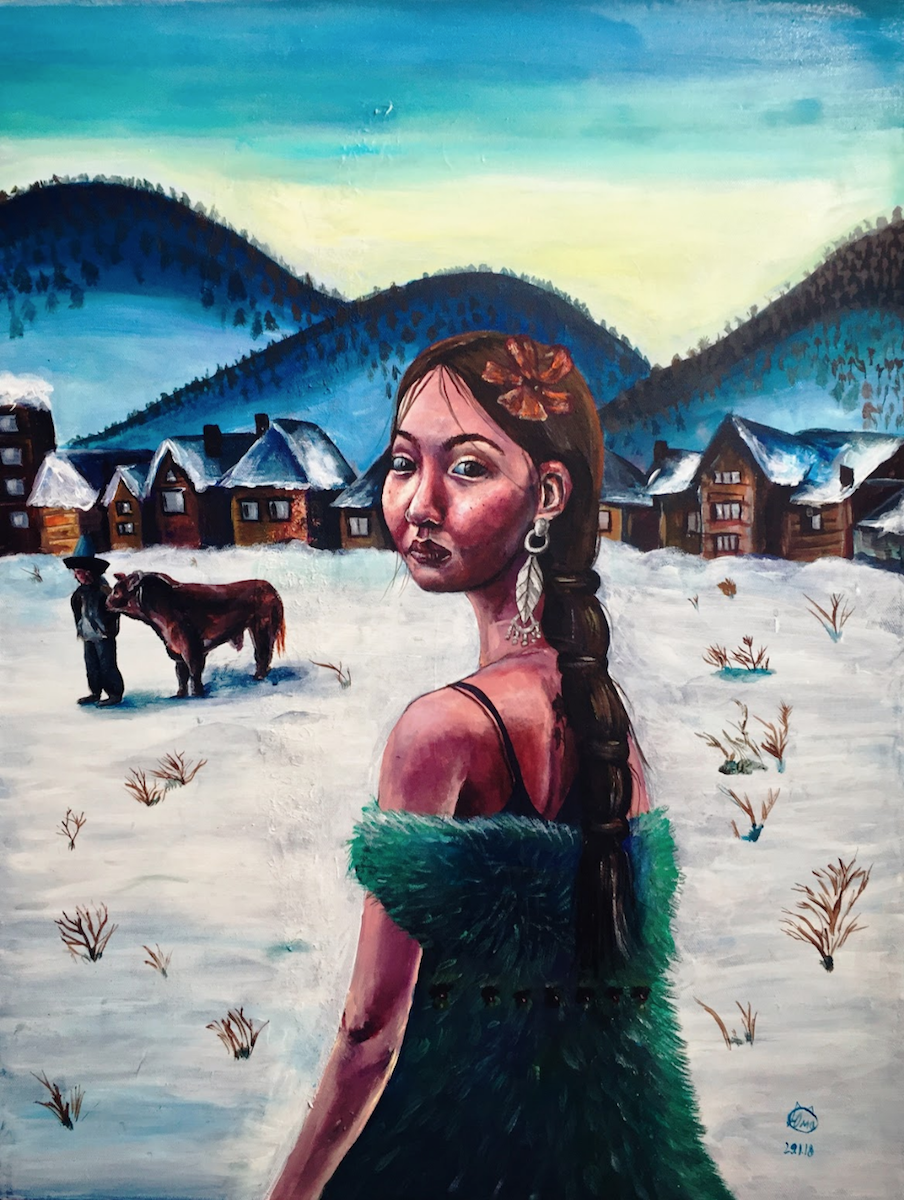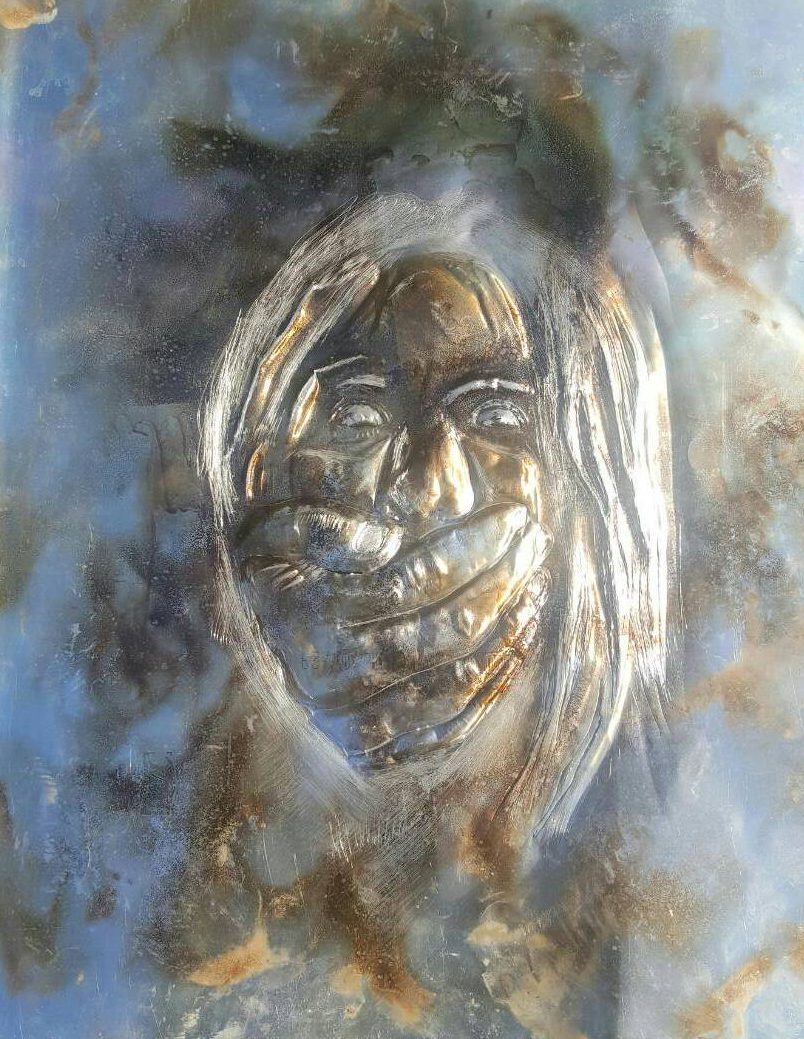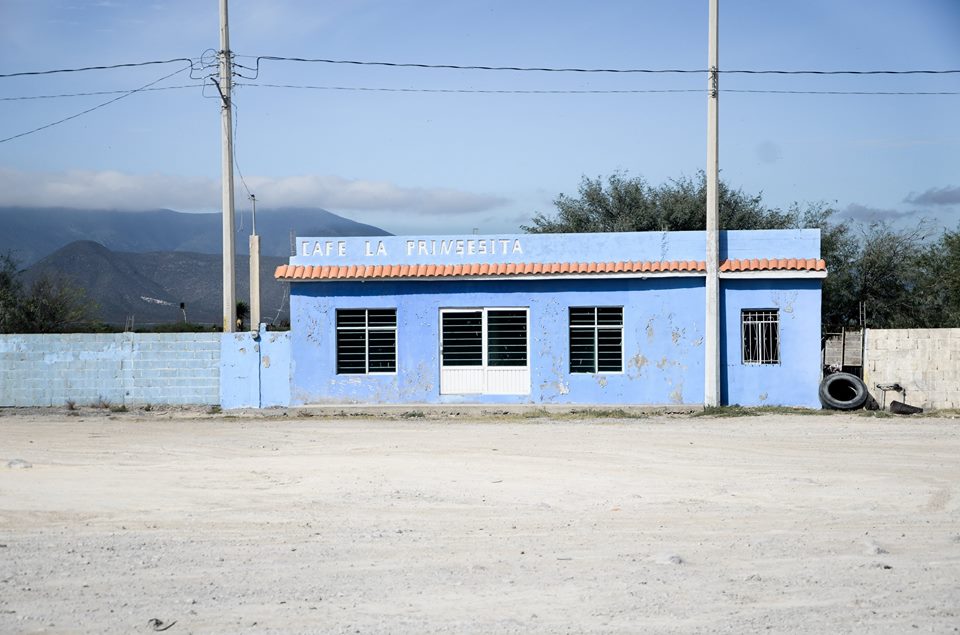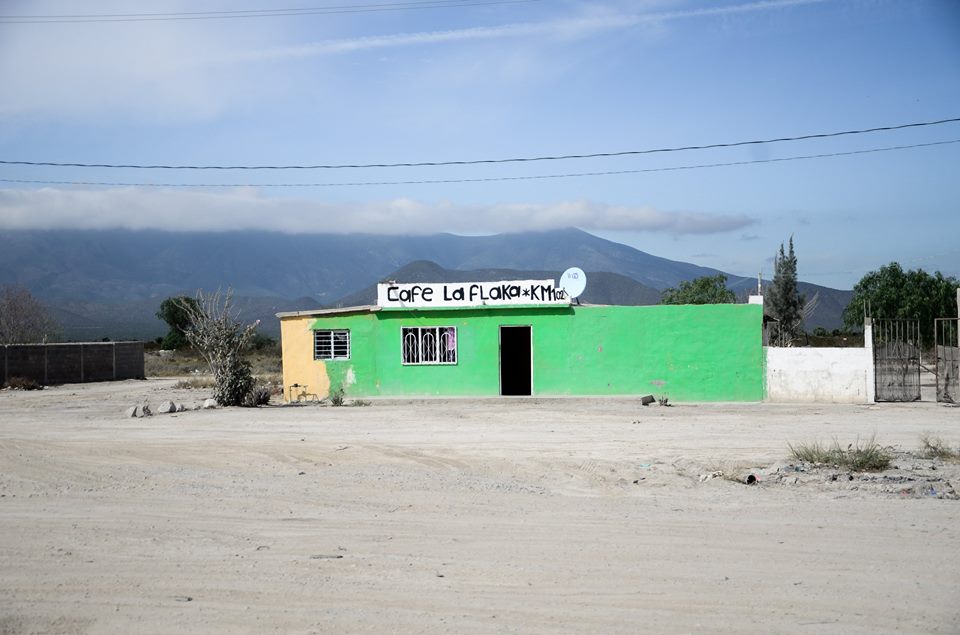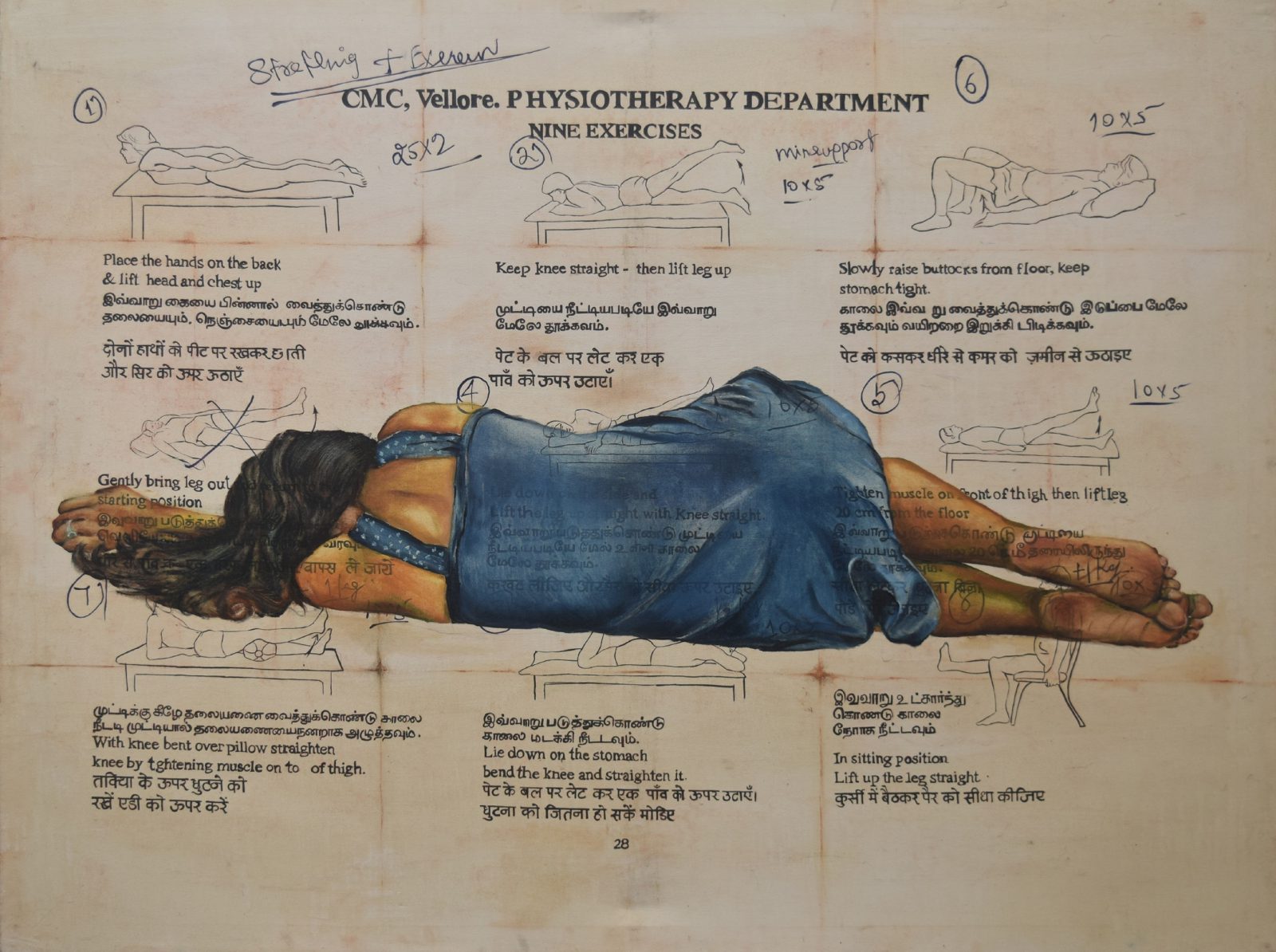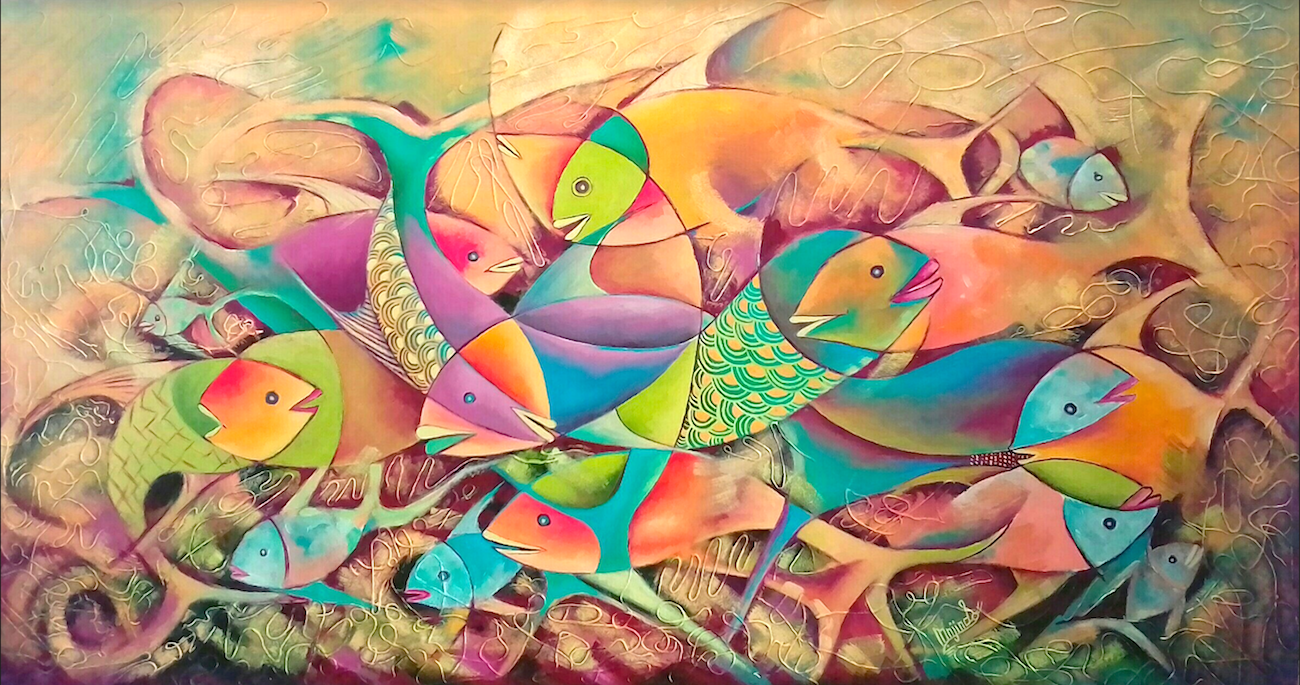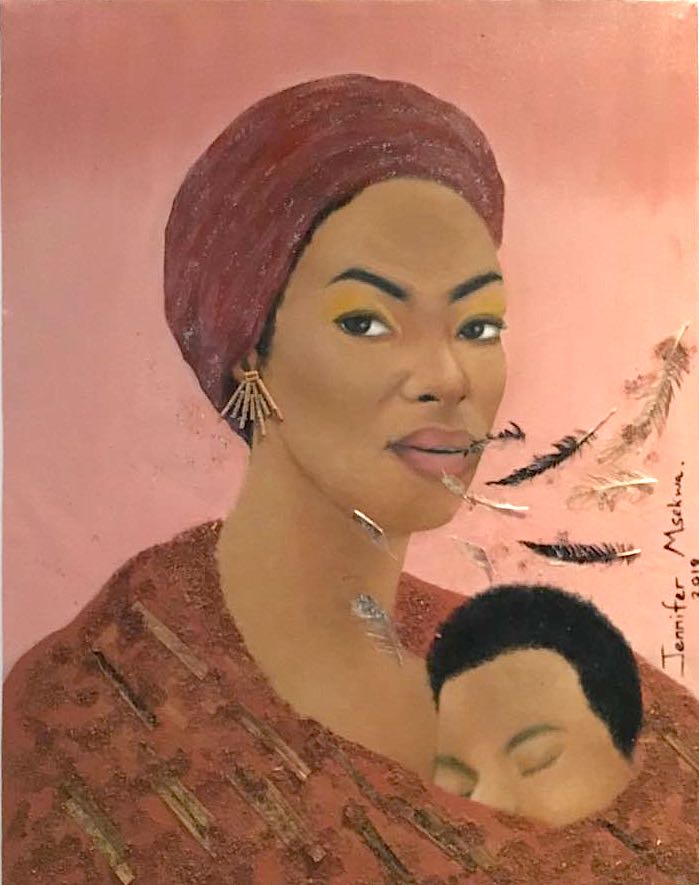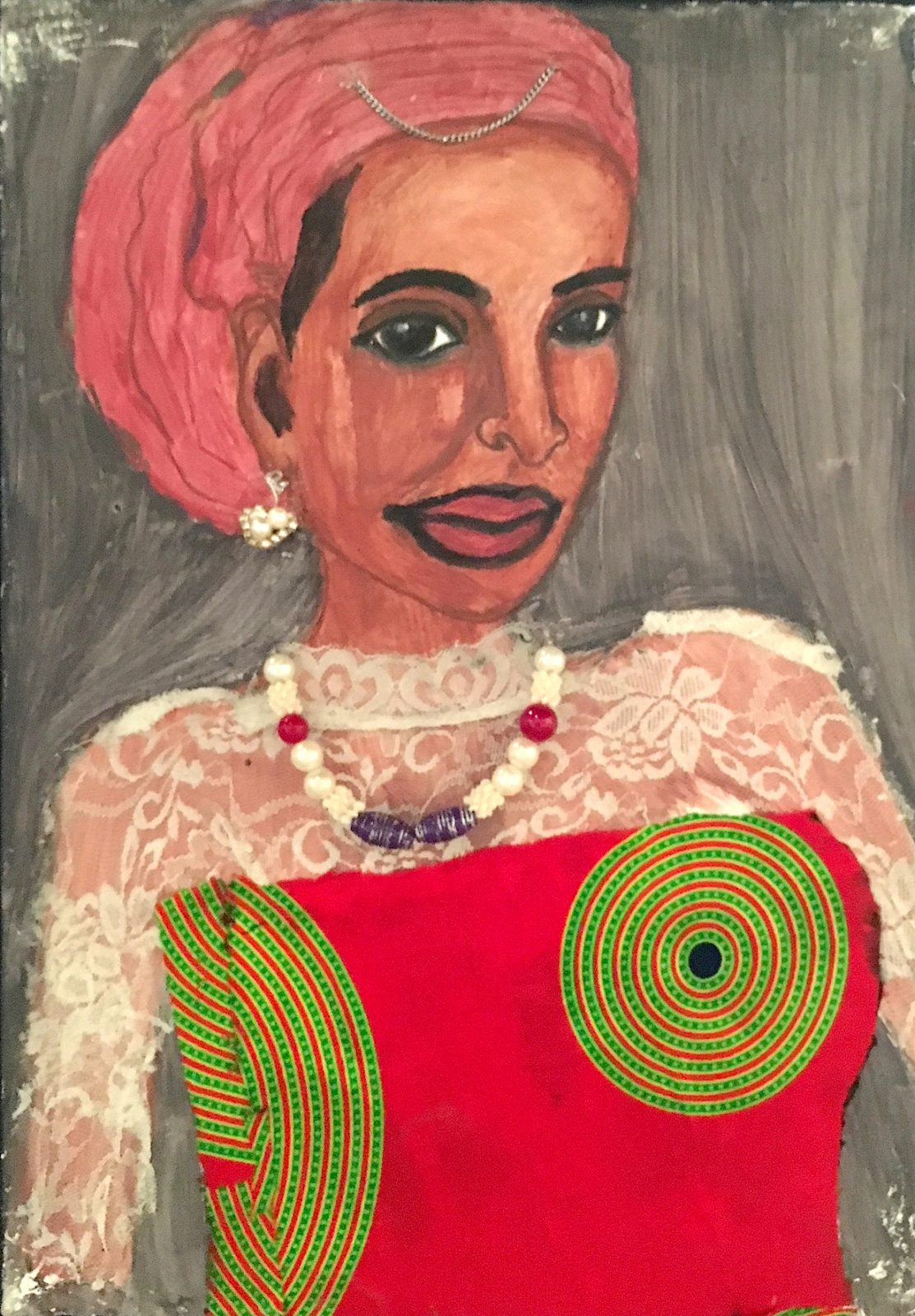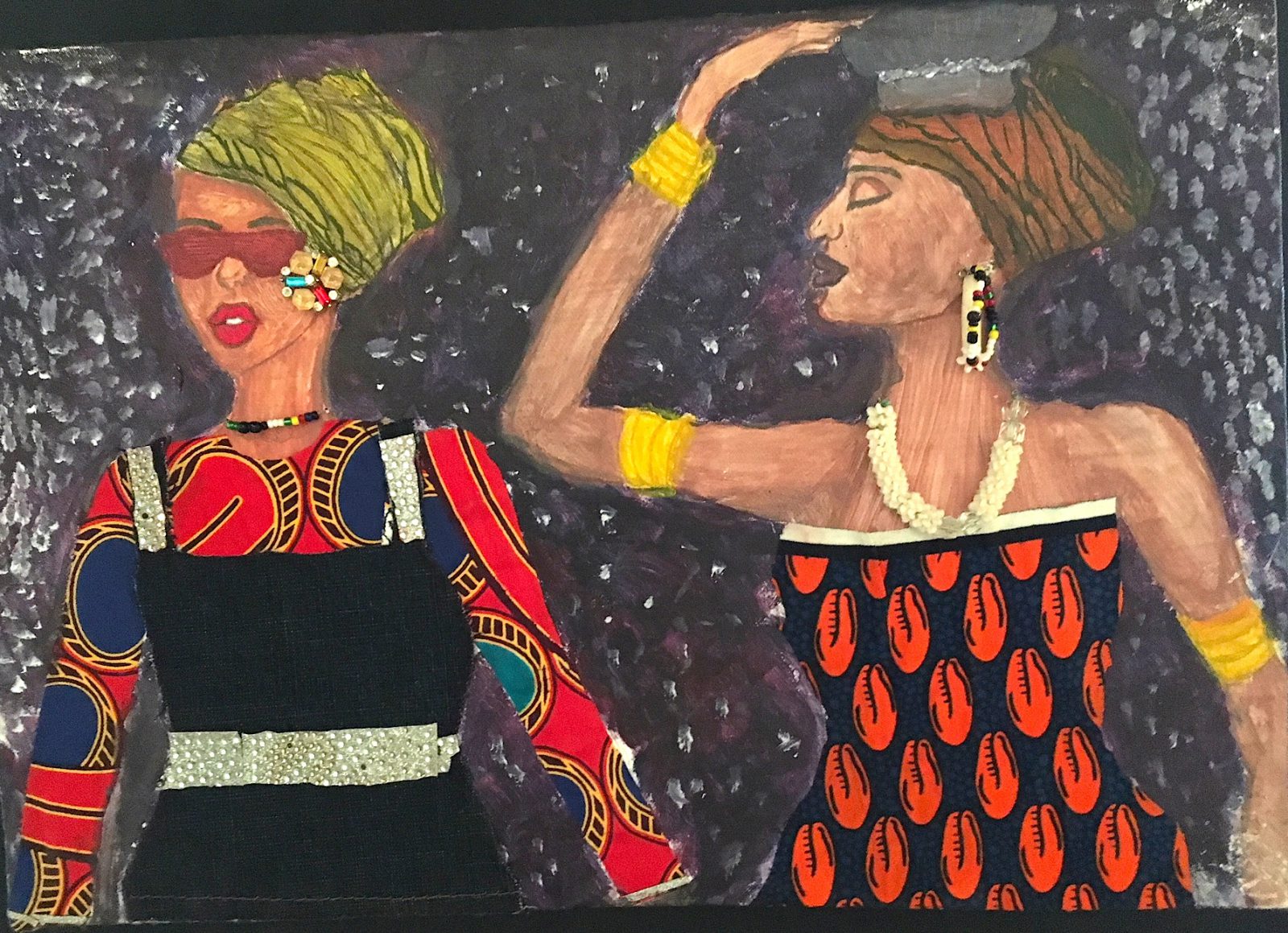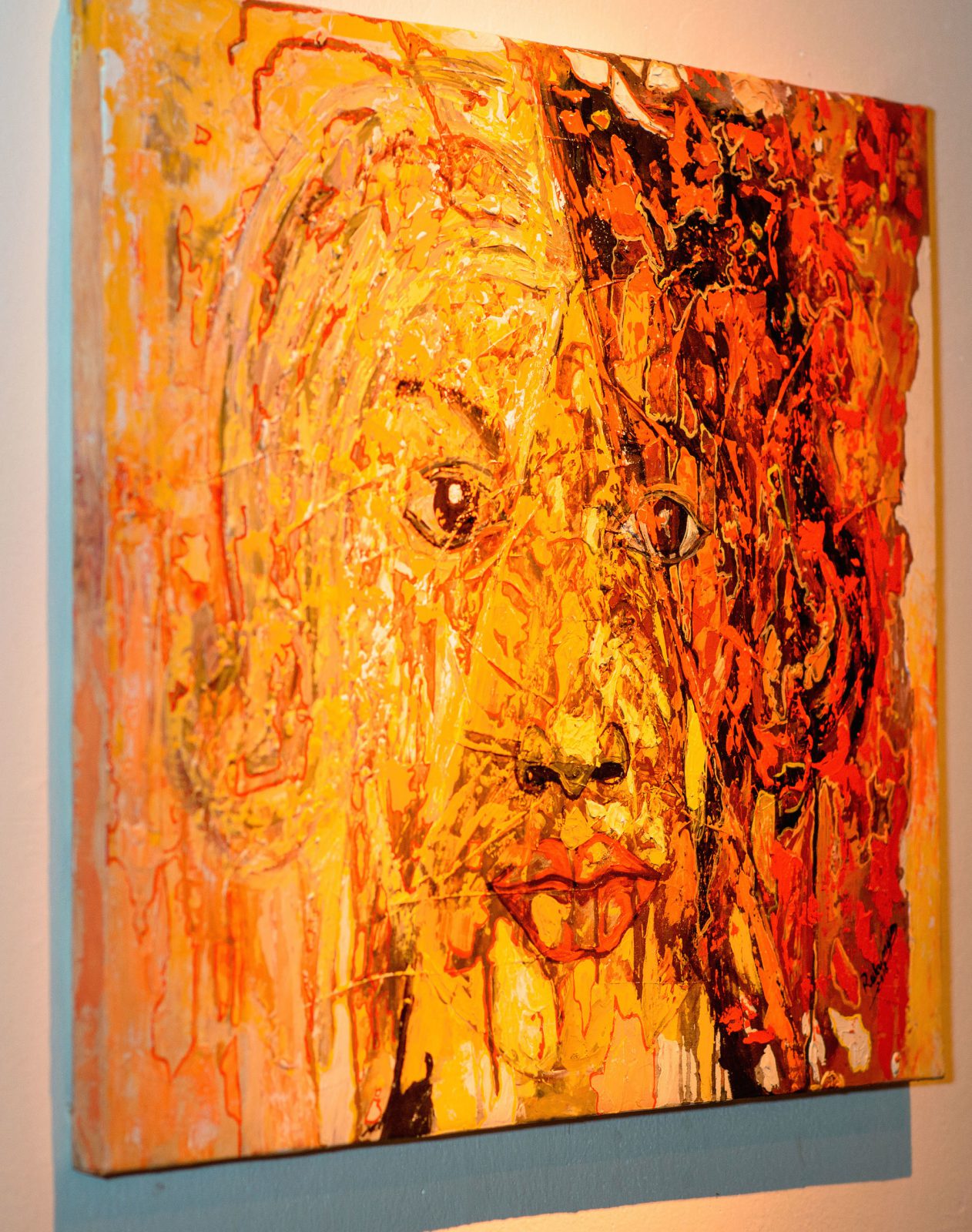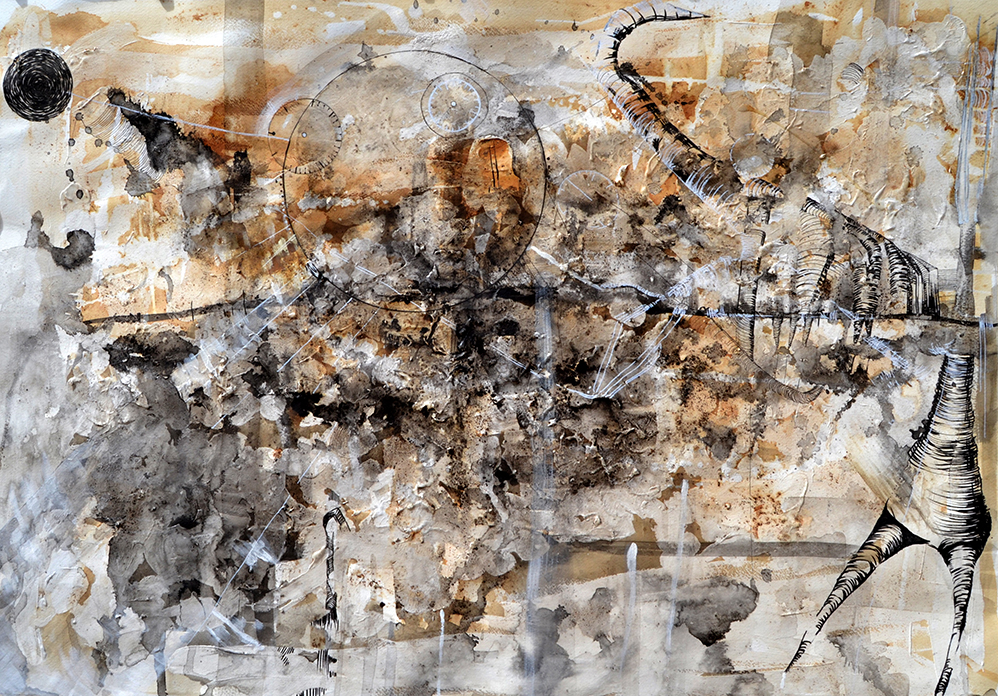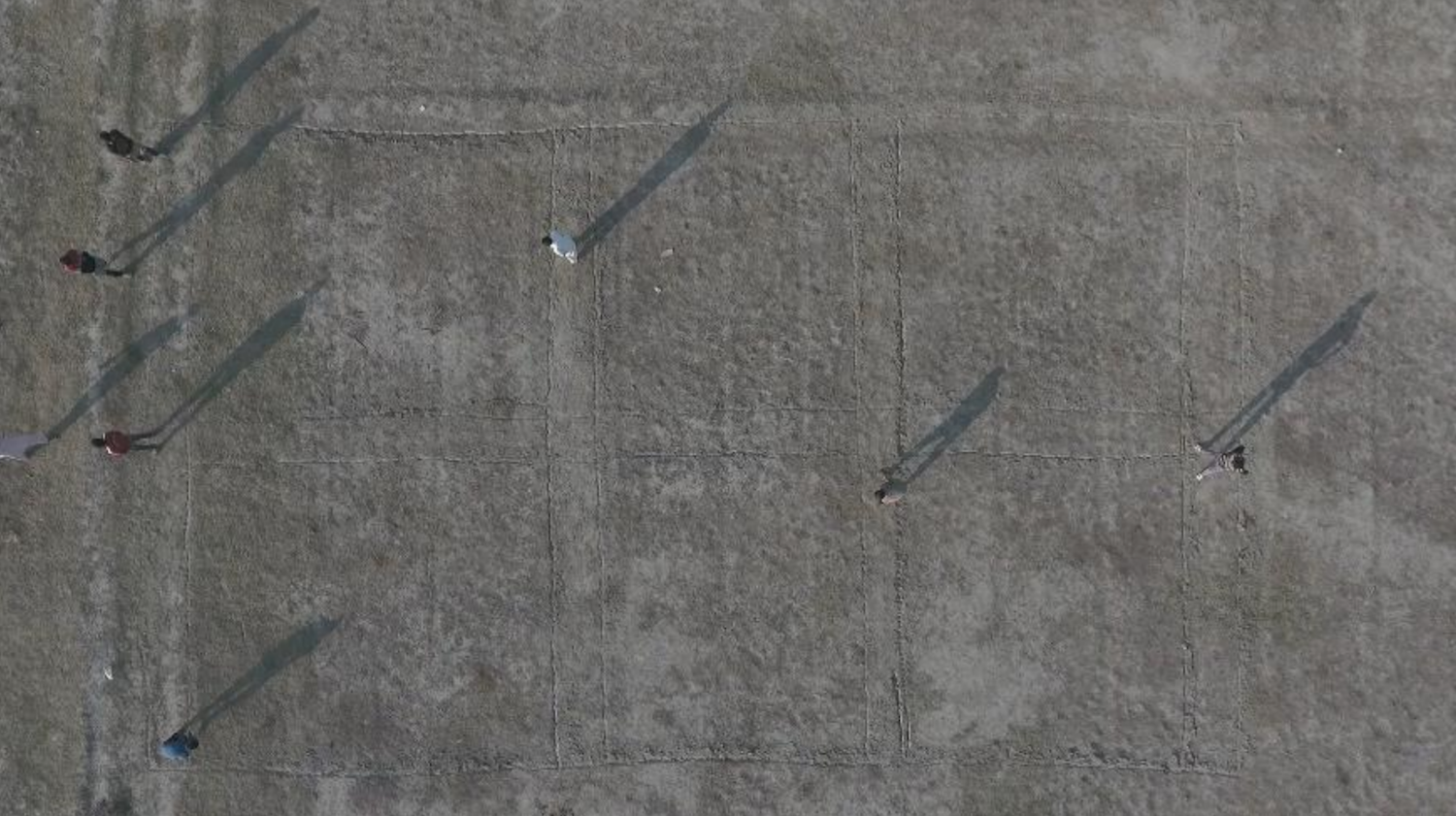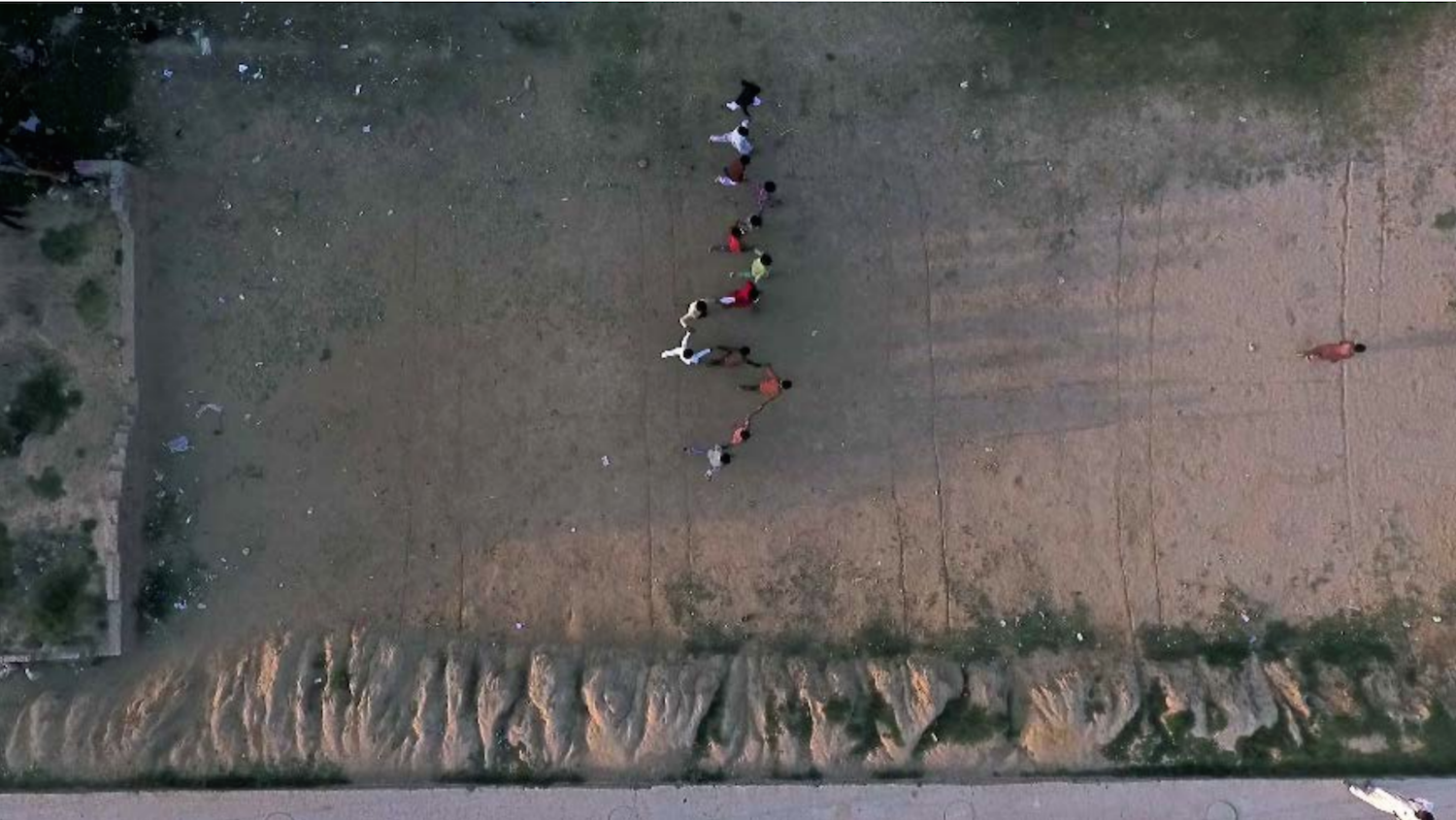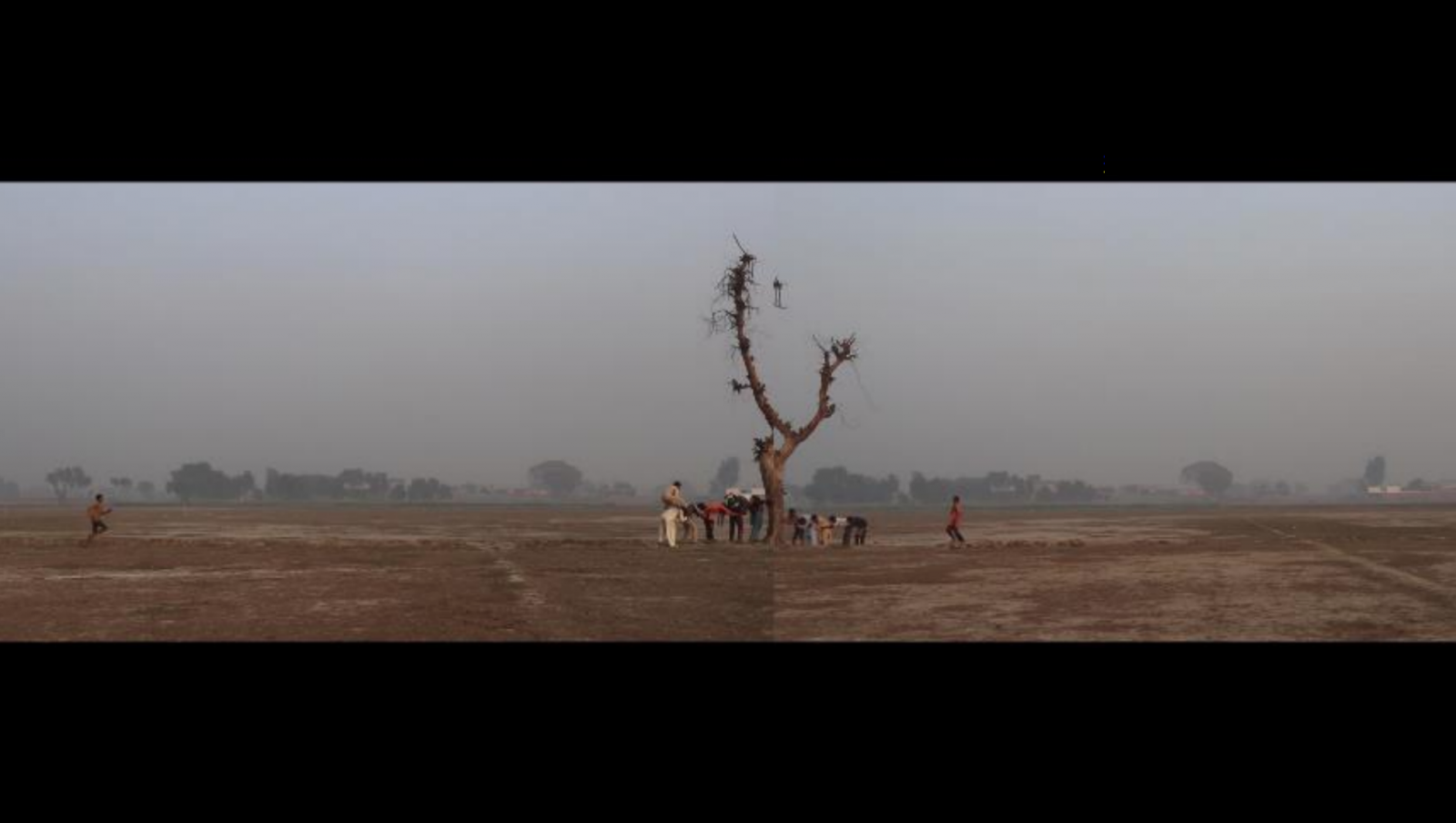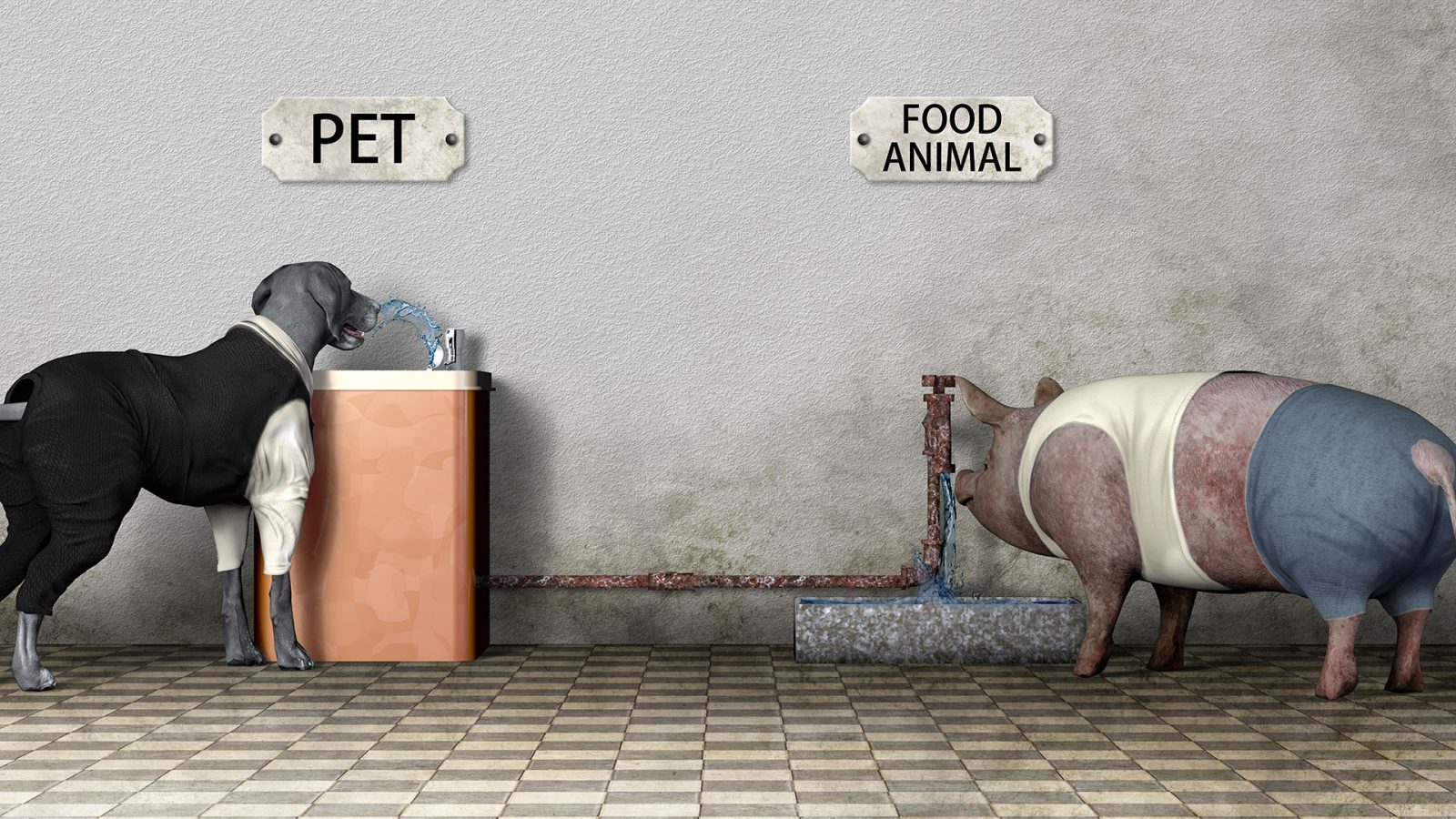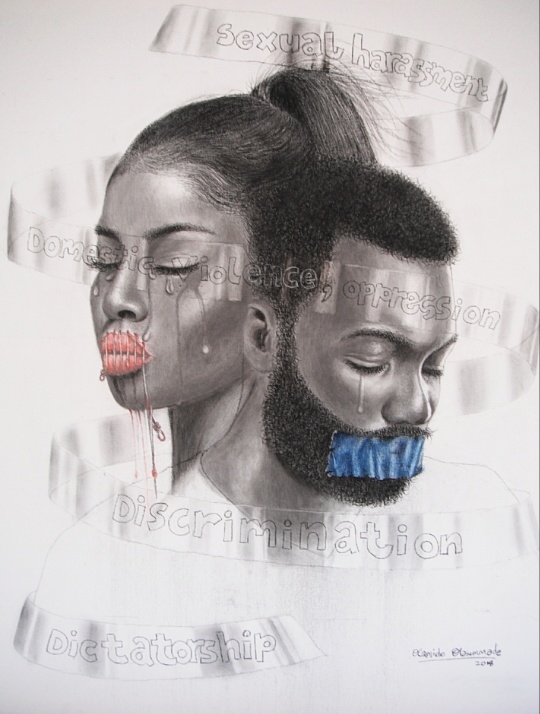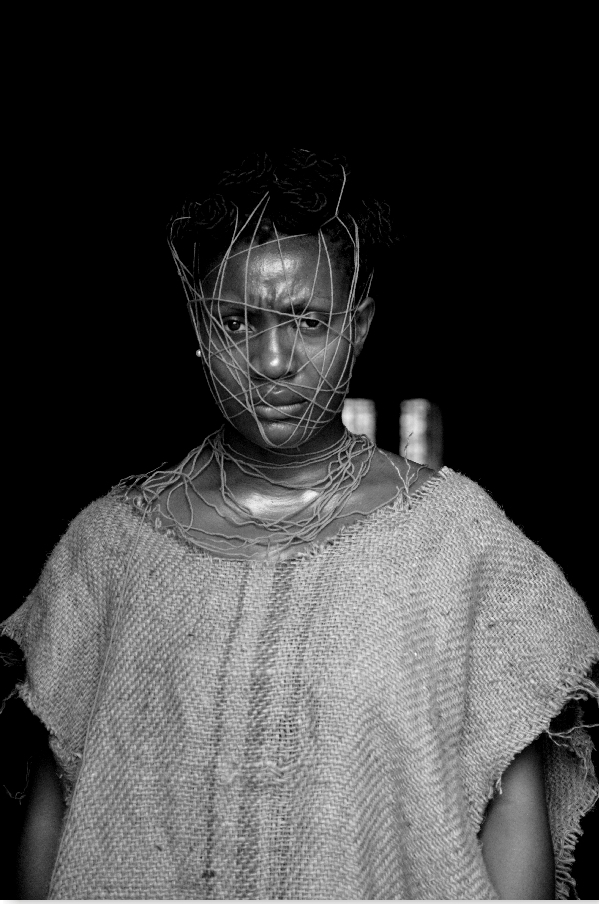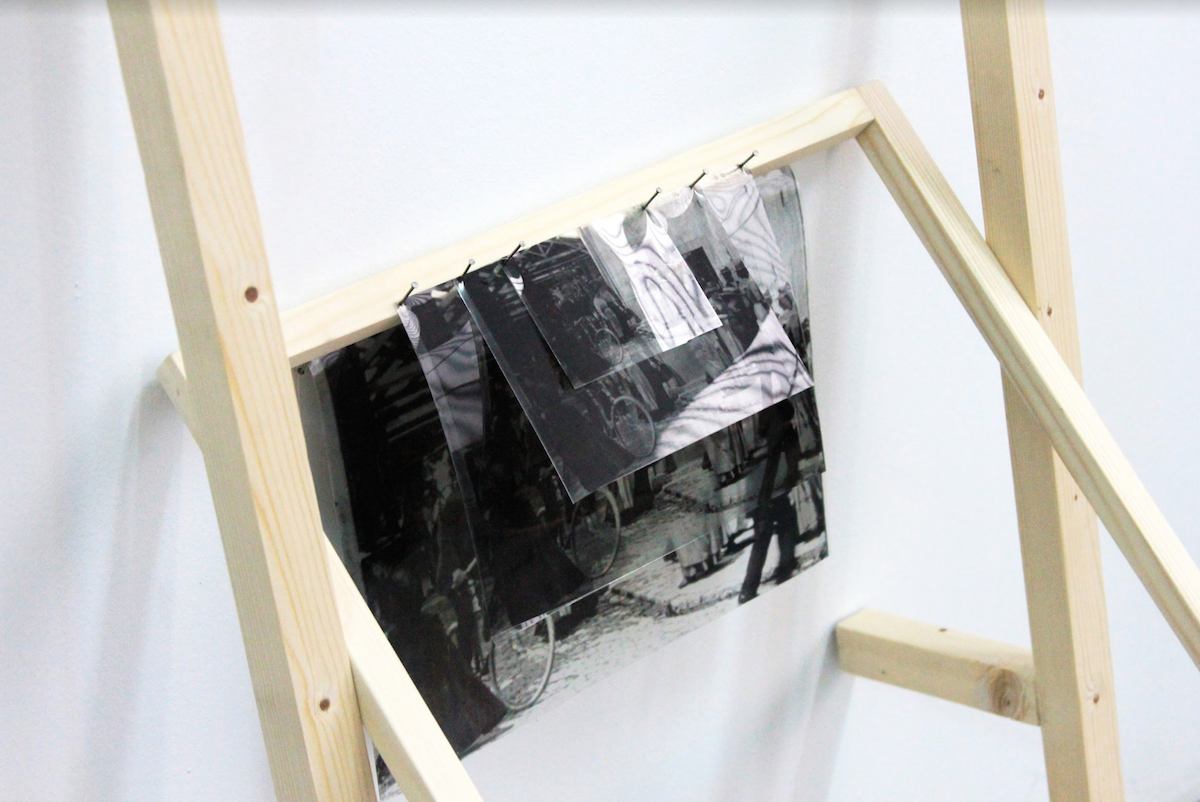Last Image Show
An international young artists exhibition exploring the theme of 'Silence'
Curated by Gadi Ramadhani in collaboration with Emergent Art Space,
the Last Image Show has brought together, from 21 countries, the works of 33 artists
reflecting on varied and diverse experiences of 'silence' and sharing them through their art,
in a cross cultural dialogue that has both highlighted stories we have in common
and opened our eyes to new and unexpected ones.
The Last Image Show was a live exhibition in Dar es Salaam, Tanzania, in September 2018.
This is the online version of that exhibition.
Aaron Samuel Mulenga
Zambia
By reimagining images that depict biblical characters and stories in a way that
includes people of color, where they have not been before, I intend to destabilize
the Eurocentric narrative that is prevalent in Christian images.
Through art I speak about my faith, culture and identity, especially when
using themes and a visual language that blend the African culture
with historic Christian imagery.
Aisha Jemila Daniels
Qatar
The countries members of Gulf Cooperation Council (Persian Gulf region),
once in cooperation with each other and governed by Islam,
which promotes peace and understanding, no longer work in unison
after cutting off diplomatic relations with Qatar.
Wanting to provoke thought, I visualize an alternate reality where the Sheikh,
or King, is a woman. Under an idealized female leadership there
is portrayed a unified Gulf Cooperation Council.
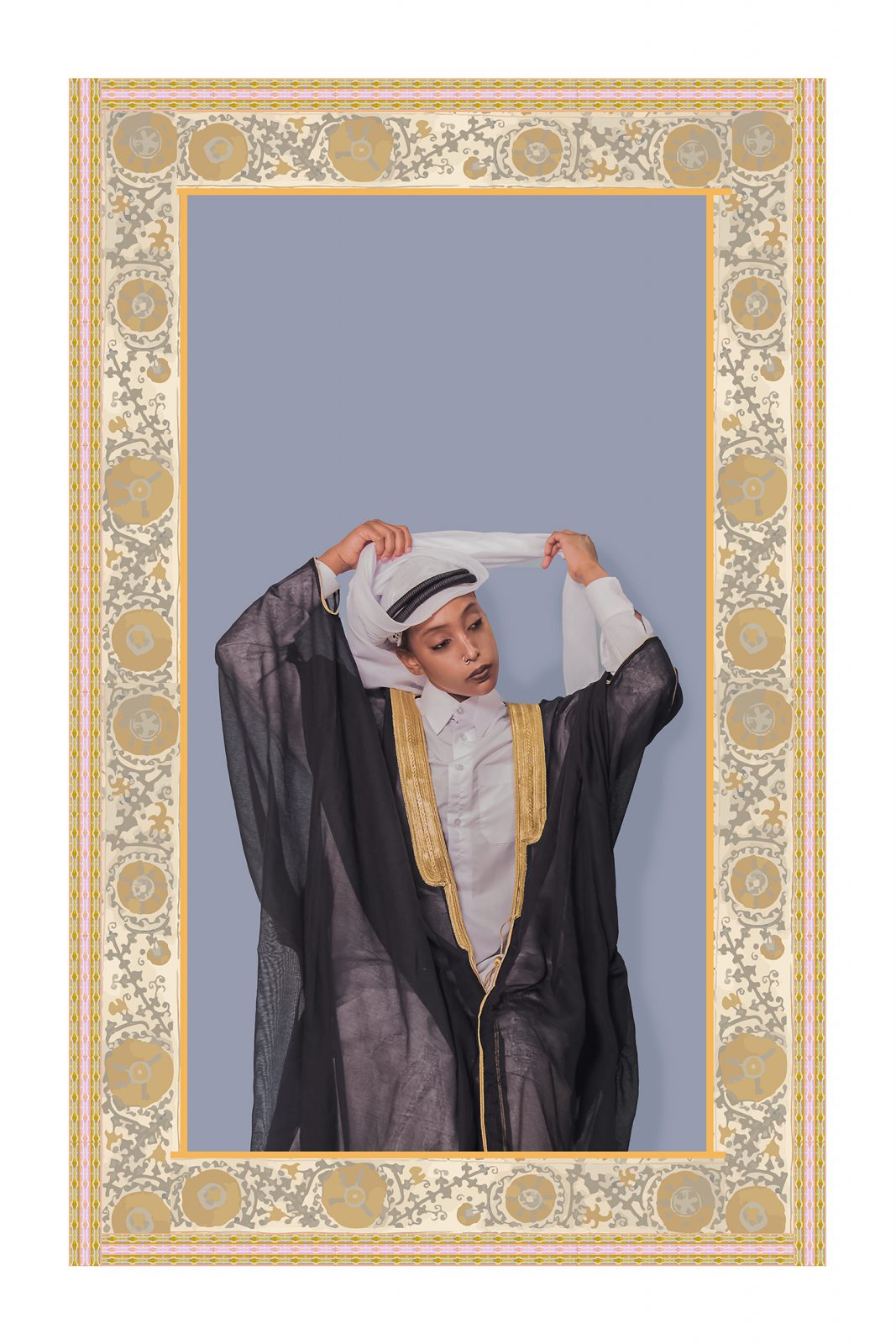
Sheikh Aisha Grooming Herself 2
Digital collage
Doha, Qatar
More info
The crisis between the Gulf Cooperation Council (GCC) came to the public’s eye in the summer of 2017 and has continued into 2018. Taken from Al Jazeera news: “The GCC rift followed US President Donald Trump's visit to Saudi Arabia in May, where he met leaders of the Arab world. The night before Trump's visit, the former US defense secretary, Robert Gates, offered a scathing assault on Qatar, criticizing its support for "Islamists". Starting with three members of the GCC, Bahrain, UAE and Saudi Arabia, abruptly cutting off diplomatic relations with Qatar, now 13 countries have cut or severed relations with Qatar. Over 89 diplomatic missions are still open and operate in Qatar, and 34 countries maintain their diplomatic relations. The blockade has disrupted business, education and transport links among Qatar and its neighbors. It has resulted in the separation of families whose members hold different passports. Additionally, communication outlets are banned, gag orders have been put in place, and international traveling has become more expensive along with Qatar citizens and residents’ every day needs.
The GCC, once in cooperation with each other and governed by Islam, which promotes peace and understanding, no longer works in total unison. In wanting to provoke thought, this exploration visualizes an alternate reality where the Sheikh, or King, is a woman. Under an idealized female leadership there’s portrayed a unified GCC region.

Untitled (Reflection)
Digital collage
Doha, Qatar
More info
The crisis between the Gulf Cooperation Council (GCC) came to the public’s eye in the summer of 2017 and has continued into 2018. Taken from Al Jazeera news: “The GCC rift followed US President Donald Trump's visit to Saudi Arabia in May, where he met leaders of the Arab world. The night before Trump's visit, the former US defense secretary, Robert Gates, offered a scathing assault on Qatar, criticizing its support for "Islamists". Starting with three members of the GCC, Bahrain, UAE and Saudi Arabia, abruptly cutting off diplomatic relations with Qatar, now 13 countries have cut or severed relations with Qatar. Over 89 diplomatic missions are still open and operate in Qatar, and 34 countries maintain their diplomatic relations. The blockade has disrupted business, education and transport links among Qatar and its neighbors. It has resulted in the separation of families whose members hold different passports. Additionally, communication outlets are banned, gag orders have been put in place, and international traveling has become more expensive along with Qatar citizens and residents’ every day needs.
The GCC, once in cooperation with each other and governed by Islam, which promotes peace and understanding, no longer works in total unison. In wanting to provoke thought, this exploration visualizes an alternate reality where the Sheikh, or King, is a woman. Under an idealized female leadership there’s portrayed a unified GCC region.
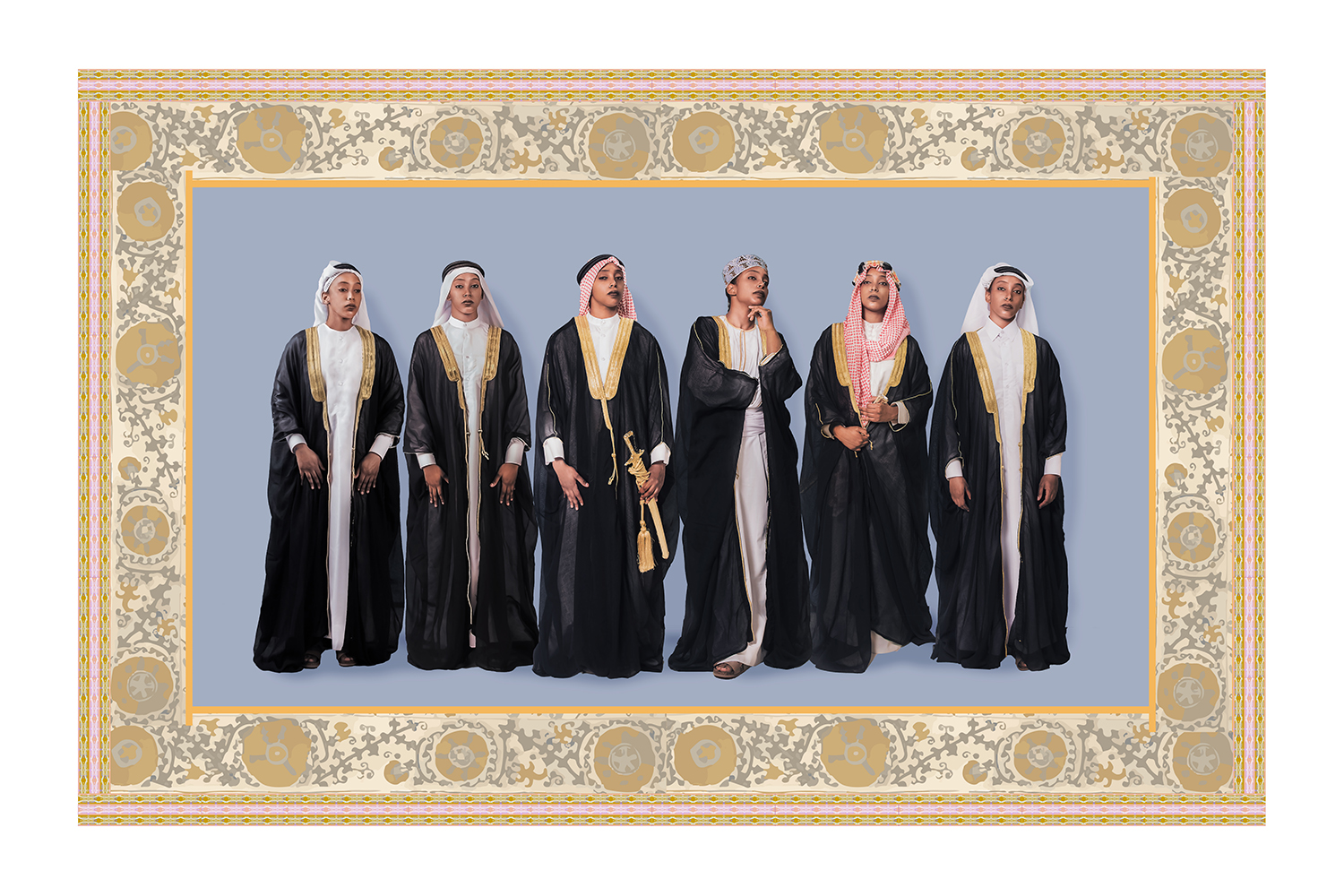
Gulf Cooperation Council
Digital collage
Doha, Qatar
More info
The crisis between the Gulf Cooperation Council (GCC) came to the public’s eye in the summer of 2017 and has continued into 2018. Taken from Al Jazeera news: “The GCC rift followed US President Donald Trump's visit to Saudi Arabia in May, where he met leaders of the Arab world. The night before Trump's visit, the former US defense secretary, Robert Gates, offered a scathing assault on Qatar, criticizing its support for "Islamists". Starting with three members of the GCC, Bahrain, UAE and Saudi Arabia, abruptly cutting off diplomatic relations with Qatar, now 13 countries have cut or severed relations with Qatar. Over 89 diplomatic missions are still open and operate in Qatar, and 34 countries maintain their diplomatic relations. The blockade has disrupted business, education and transport links among Qatar and its neighbors. It has resulted in the separation of families whose members hold different passports. Additionally, communication outlets are banned, gag orders have been put in place, and international traveling has become more expensive along with Qatar citizens and residents’ every day needs.
The GCC, once in cooperation with each other and governed by Islam, which promotes peace and understanding, no longer works in total unison. In wanting to provoke thought, this exploration visualizes an alternate reality where the Sheikh, or King, is a woman. Under an idealized female leadership there’s portrayed a unified GCC region.
Asmaa Elmongi
Egypt
Fear of isolation, neglect, and exclusion. Fear of being ridiculed, of success and conflict. Fear of controlling,
labeling, and attacking. Fear of racist structures. I have been introduced to all those
contexts of fear as a result of different forms of silence.
Through my mind map, I present here the types of silence that I have experienced throughout my life.
My shapes represent different forces that we fear, and lead us to the violence that
caused our silence in its various forms, pedagogically, socially, and violently.
Raka Panda
India
I capture the daily life around me, therefore you can see time, space, common things,
crowds of people and objects, all sheltered in my canvas. Quietly all the painful,
struggling faces try to get shape and form.
But amidst the chaos, the characters are mute, their feelings never expressed.
Surrounded by the noise, they live in silence.
Elizabeth Emmanuel
Tanzania
There is strength and freedom in stillness. When we learned to meditate in quietness,
we could hear ourselves more, our bodies and surroundings. We started to discover
a path to liberation. While shadows were emanating and fading, something deeply rooted
within us was blossoming, that which became our most valuable asset and strongest foundation.
Despite the outer disruptions, we rise because our strength lies in stillness and, in our silence,
we move mountains. We are and will always be – beautiful, faithful, proud, strong, wise and one.
Ojima Abalaka
Nigeria
The characters in these illustrations experience silence in a moment of reflection,
devoid of any interruptions and external influences. They are still and contemplative.
The moment invites the viewer into their world, and to imagine the world
as it happens in their heads. And the viewer is also invited to a moment of reflection.
Josephine Kuuire
Ghana
In the Dagara community, amongst the people of Ghana, Burkina Faso and Ivory Coast,
women perform rituals in order to build their masculine energy. It is believed that both
women and men must work on balancing their sexual energies.
Yet people who are ‘different’ are misrepresented, stigmatized, thought of being possessed
by evil spirits. They are not recognized as ‘human beings’ even though these ways
of existing are deeply rooted in our culture.
There are other forms of existing within the body other than just ‘male’ or ‘female’.
Roanna Tella
Nigeria
Conflicting emotions are portrayed here.
A place of curiosity fueled by anger:
why certain people do what they do and act how they act,
where they have been and what has happened along the way.
Nabisenke Teddy
Uganda
“Ozaaladdi?’’ ..... “When are you giving birth?”
Giving birth when I want. Please, society don’t dictate,
I will give birth when ready. Why are you so concerned about
my not giving birth? Are you willing to look after my offspring?
You say I am growing older, and no children.
Sure they will come when I am ready. Why are you so bothered anyway?
Give me space, give me time, give me speech, and give me freedom.
Yumzhana Radnaeva
Russian Federation
I paint Buryat girls, because Buryat identity is changing fast.
Ages ago Buryats were Mongols, living a nomadic life, but those days have passed.
I paint the ideas, women and kids, who were born in a very strange time:
the middle time between steppe nomads and modern people.
Adikinyi Otsomo Kondo
Kenya
Silence isn’t necessarily about lack of speech but mostly about lack of expression.
Lack of being able to connect and communicate either with one’s inner voice
or with the actual being of others.
At the same time, silence is connecting with the inner voice, tuning into
the frequency of the dwelling voices, not understood easily in a world of much noise.
Therefore, is silence the enemy, or the friend?
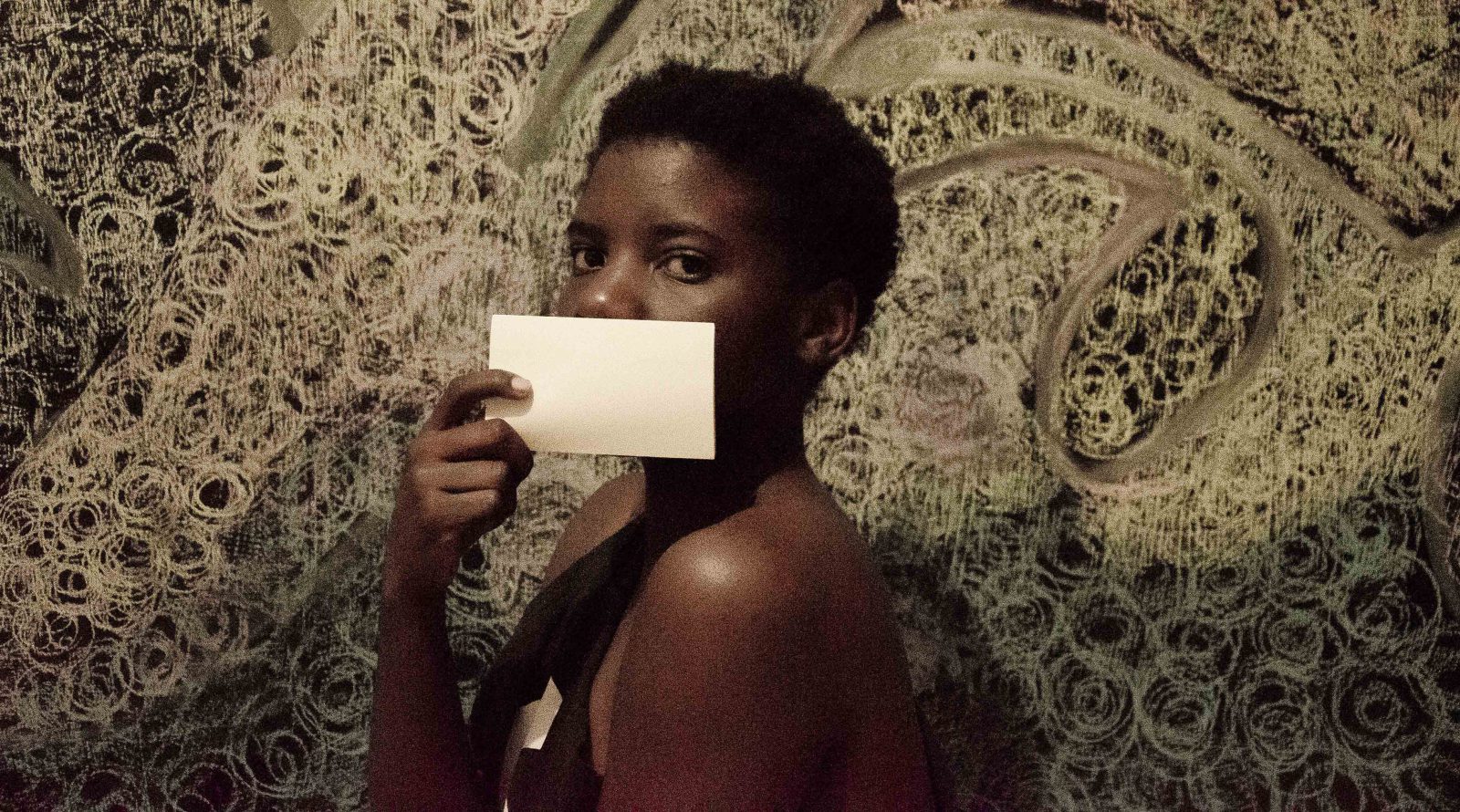
Silence
Phototgrapy
Nairobi, Kenya
More info
An image depicting the face of silence. Expressionless, faceless, yet present.
A self portrait born out of a personal struggle with sound, communication and the importance of silence.
An an image depicting the process of growth and questioning, the path being revealed and the presence of time and the depth of silence.
This image was part of the "Last image show" exhibition; a collaboration between Emergent Art Space and Kokoten Studio, TZ.
An an image depicting the process of growth and questioning, the path being revealed and the presence of time and the depth of silence.
This image was part of the "Last image show" exhibition; a collaboration between Emergent Art Space and Kokoten Studio, TZ.
Odur Ronald
Uganda
My visual impressions attempt to portray the alarming aggression
through which artists in our society are silenced when expressing their grievances.
I was inspired by a Ugandan activist Stella Nyanzi, who uses poetic expression
to speak her mind on issues that are oppressive in her surroundings.
Women like her are not recognized as heroines. They are suppressed and silenced.
Daniel Kossman
Germany
Situated in the far east of Berlin, Hellersdorf is known for its dull high-rise
housing blocks, its greyness, its social problems and its xenophobia.
Dozens of untold stories lurk behind the glossy windows of Hellersdorf.
Untold stories, unheard voices, unseen problems that resonate into
a dangerous silence, a silence so loud that one needs to level up
the volume of one’s headphones in order to not hear it.
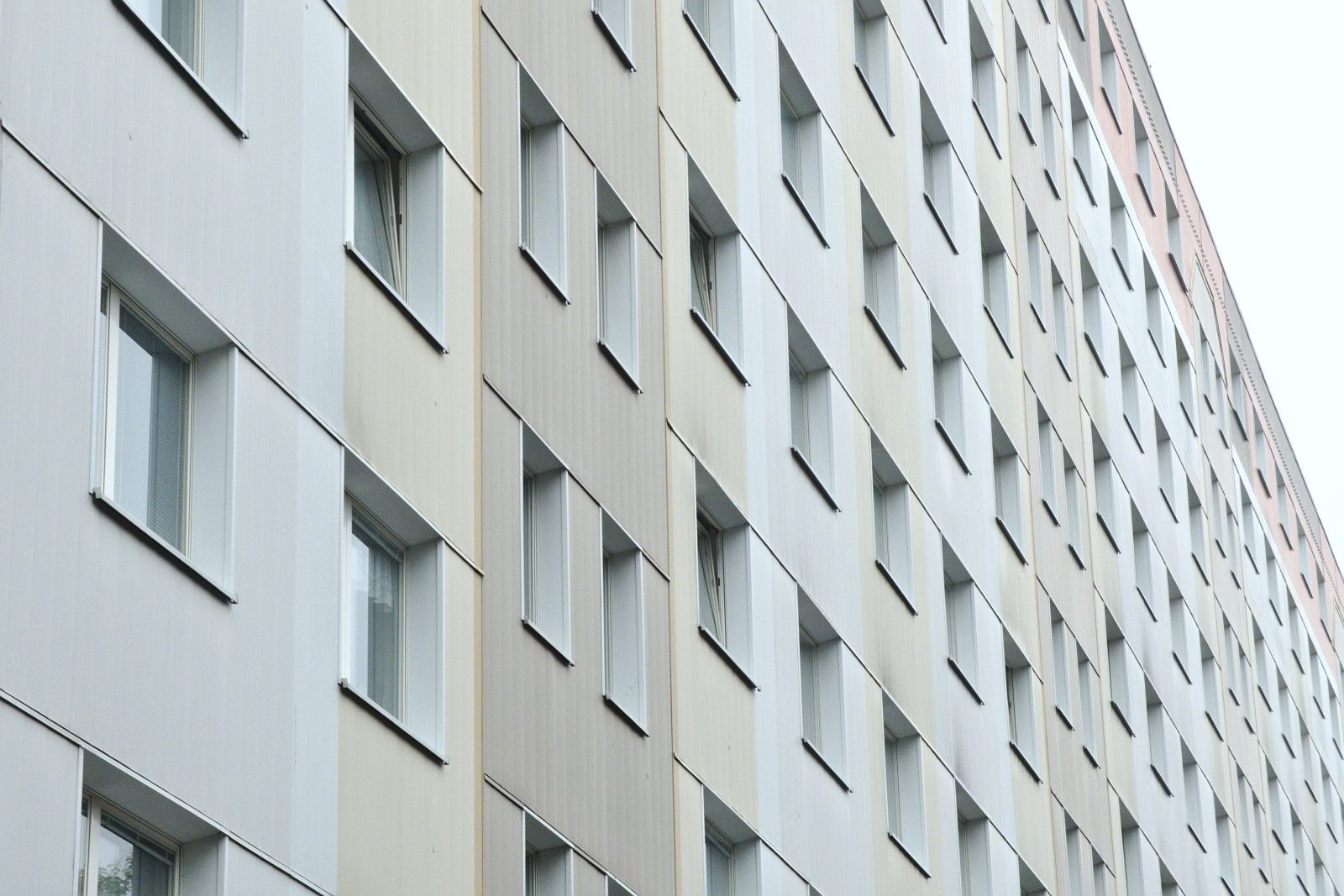
Silence in Hellersdorf IV
Photography
Berlin, Germany
More info
Hellersdorf-Marzahn, that Berlin district, where highly organized far-right groups fuse
with ordinary bourgeois racists,
where so called concerned citizens set up
demonstrations against refugees, and far-right parties organize children’s parties for
everyone - as long as everyone owns the right’s skin-color, gender and orientation.
Situated in the far east of Berlin, it is known for its dull high-rise housing blocks, its
greyness, its social problems and its xenophobia: 354 cases of far-right and
xenophobic activities in 2016 alone - the second highest number in the whole of
Berlin.
In my opinion, Hellersdorf is architectural violence, expression of an insane attempt to
squeeze as many people as possible into a limited space, regardless of its social and
individual consequences.
My photos show the loneliness and tristesse which I felt while wandering through this
concrete jungle in autumn 2014. It is the perspective of an outsider.
Silence in Hellersdorf III
Photography
Berlin, Germany
More info
Hellersdorf-Marzahn, that Berlin district, where highly organized far-right groups fuse
with ordinary bourgeois racists,
where so called concerned citizens set up
demonstrations against refugees, and far-right parties organize children’s parties for
everyone - as long as everyone owns the right’s skin-color, gender and orientation.
Situated in the far east of Berlin, it is known for its dull high-rise housing blocks, its
greyness, its social problems and its xenophobia: 354 cases of far-right and
xenophobic activities in 2016 alone - the second highest number in the whole of
Berlin.
In my opinion, Hellersdorf is architectural violence, expression of an insane attempt to
squeeze as many people as possible into a limited space, regardless of its social and
individual consequences.
My photos show the loneliness and tristesse which I felt while wandering through this
concrete jungle in autumn 2014. It is the perspective of an outsider.
Juliana Alvarado
Mexico
‘Nómbralas’ are cafeterias on the roadsides of Northeastern Mexico. Their names
evoke the names or nicknames of women that disappear everyday in this country,
where the sociocultural condition of being a woman is dangerous.
Every day there are silenced women, suffering from what is known as
‘structural gender violence’.
These buildings are isolated, precarious and even hopeless,
just as the situations in which most of the femicides end.
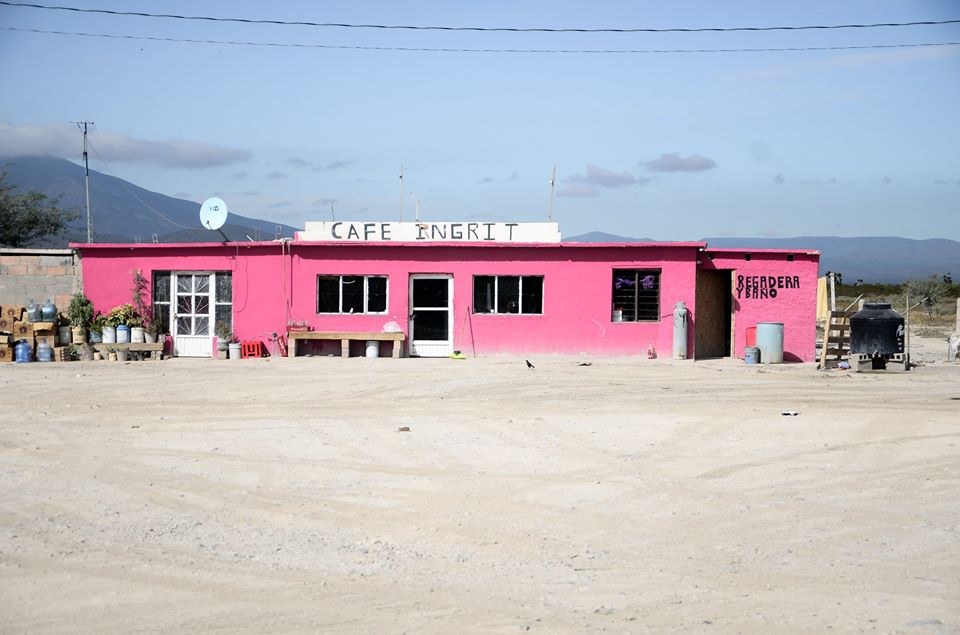
Untitled 1, Series: Nómbralas
Injection of ink on cotton paper
CDMX, Mexico
More info
[Nómbralas] is a typology of 12 photographs about austere cafeterias, uncovered on the roadsides of north east Mexico. My interest with this constructions and their peculiar repetitive aesthetic is to conduct to a reading of abandonment in relation to the titles of this establishments, which evokes me the names or nicknames of women that disappear everyday in Mexico. The sociocultural condition of -being woman- and the perception of all things feminine in this country is dangerous: 7 women die every day because of violent reasons of which 95% of the cases go unpunished and unresolved (fgures from the National Institute of Statistics) In states like Chihuahua, the number of women murdered is 15 times higher than the worldwide average and 78 out of every 100 women has denounced some kind of violence (fgures from INEGI) in an age range encompassing 20 to 29 years old. Every day there are silenced women suffering different kinds of a problem that is known as structural gender violence. The normalcy, invisibilization and impunity are the main traits from which this fgures arise and grow. In that sense, this establishments named after these women represent altars but also represents a resignifcation of the graves symbolising the oblivion that dead women acquire and how we interact with those memories and post mortem manifestations within everyday life; however this spaces are isolated precarious and even hopeless, just as the situation in which most of the femicide ends.
Mantu Singh
India
The paintings are an assemblage of real and surreal spaces and objects
on which I am dependent because of the physical disability of my limbs.
They are figurative representations of medical science, camouflaged
in social and cultural spaces. They combine space and time,
present with memories, emotions and social problems,
where the memory is invariable but time and space vary.
Jayeti Bhattacharya
India
‘Silence’ I feel is the appropriate state when one needs to connect to one’s space of existence.
In the passage of time, walking through memory lane, sometimes I shiver thinking that time is grasping us
and our relations with the person next to us, even with the space around us, but we as individuals
are silently accepting all the norms and moving away with time.
Sebastian Charles Mnjindo
Tanzania
A painting of a school of fish that represents the silence and the reality of our daily life.
Jennifer Msekwa
Tanzania
A woman and her baby, where the baby represents the challenges we face, and the feathers stand for all the comments and opinions, negative and positive, that people carry about, silently.
Precious Seronga
Tanzania
“We teach girls to cater to the fragile egos of men…We teach girls shame
- close your legs, cover yourself! We make them feel as though by being born
female they’re already guilty of something… And we don’t teach boys the same? ...”
(Chimamanda Adichie)
My works are my response to the cultural expectations I have grown up in.
They are my response to being silenced.
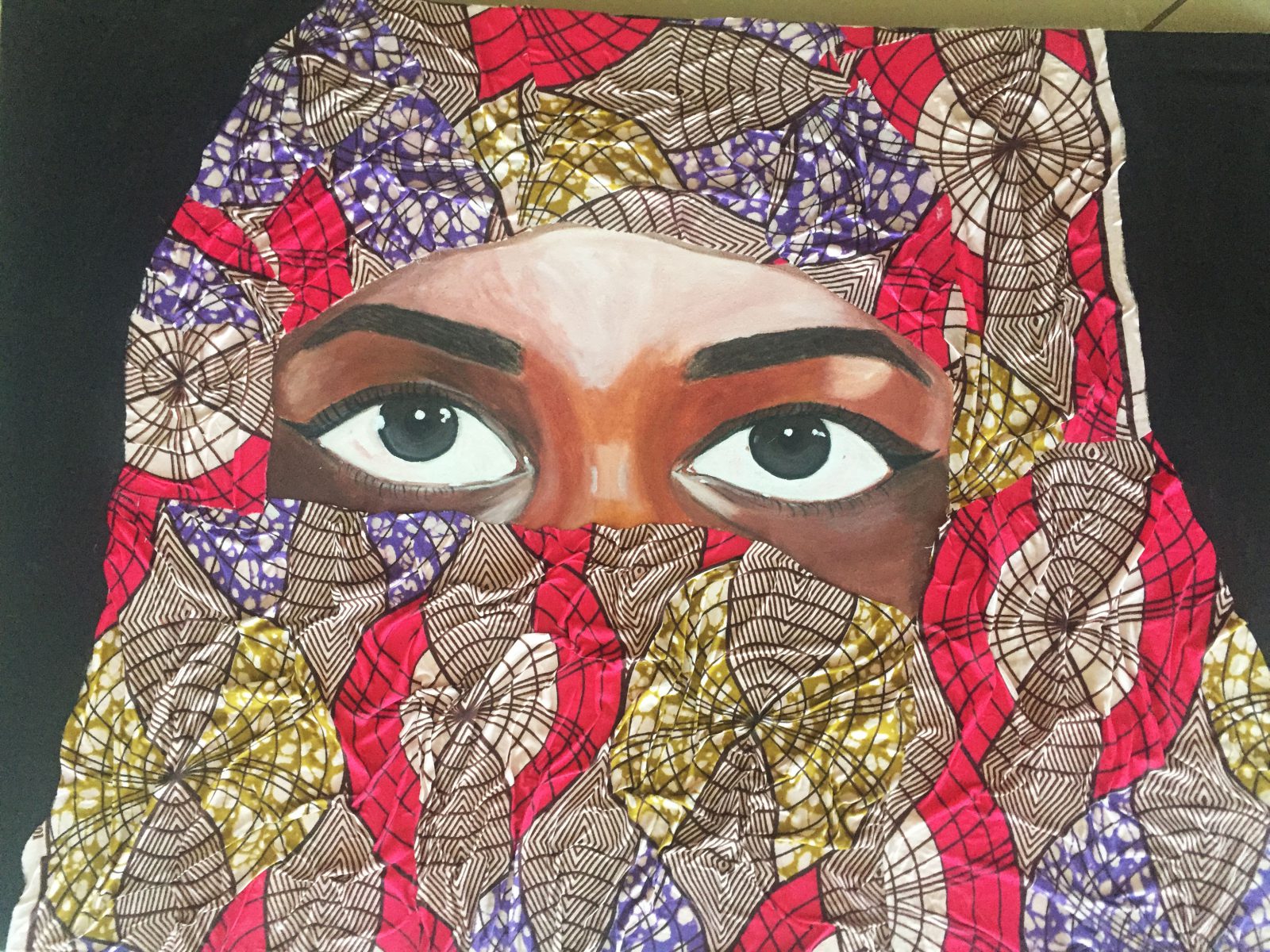
Self-portrait
Acrylic paint and kitenge fabric
Dar es Salaam, Tanzania, United Republic Of
More info
I’ve grown up in Dar es Salaam and I spent 6 years in a Muslim school (I am Christian though). This painting is inspired by my experiences- growing up I realized that what was considered appropriate dressing for a woman is to cover up as much skin as possible. The kitenge/kanga covering the face symbolizes the influence of culture not giving women a voice to what they want and in this case wat to wear.
Personally, I don’t think this is fair and I believe that women should have the freedom to wear whatever they want and shouldn’t be shamed for showing their beautiful God given bodies.
Rukundo Jean Baptiste
Rwanda
MUKOROGO (Body bleaching)
The disease of body bleaching in Africa, in particular in my country. People using
bleaching cosmetics in other to change their natural African identity, in order to look different.
If this were my LAST IMAGE, this is what I should talk about.
Caitlin Mkhasibe
South Africa
Aeronautical Map is an abstract aerial view of the earth, a commentary on the hierarchy
where human ‘development’ is placed over our relationship to the earth.
We see socio-political issues in art as having more importance than concern for our environment.
We forget that without the earth, there are no humans and therefore no ‘issues’ to discuss.
Ammar Faiz
Pakistan
Local/Folk/Regional Games in the outskirts of Lahore
An investigation into the origins and evolution of local/folk games of Lahore,
such as Gharmas / Kamas Ghori, Chug Chug, Body Body, Bandar Qila, Pito Gol Garam,
which are now almost absent from public memory. These games were chosen due to my interest in the fact
that they have undefined, shifting origins and rules, since they have always been transmitted orally.
Dengke Chen
China / US
The sounds of silence.
Who's in control? The dictator who is controlling and censoring the media,
and building a wall of silence? The corporate hands controlling the police and the public?
The developer's excavator destroying historical places? The consumers ignoring the consequences
and by-products of industrialization such as air pollution and global warming?
Olamidetaiwo Olasunmade
Nigeria
Culture sets us free, yet keeps us bound.
We hide behind our pains, behind our tears,
behind our unspoken fears, for we are silenced in the midst of this conspiracy.
This work is a visual representation of issues we face and are surrounded by,
yet we are unable to speak of.
Kolapo Obadiah Olorunyemi
Nigeria
You choose who you are on social media, either your identity or a Hidentity.
The implementation of internet filters and anonymity are closely related, but whereas filters are applied
in a stringent and pervasive censorship, the possibility of being able to look out on an anonymous network
becomes, first and foremost, a matter of exercising a fundamental right of liberty of expression,
avoidance of censorship, liberal promotion and circulation of thought.
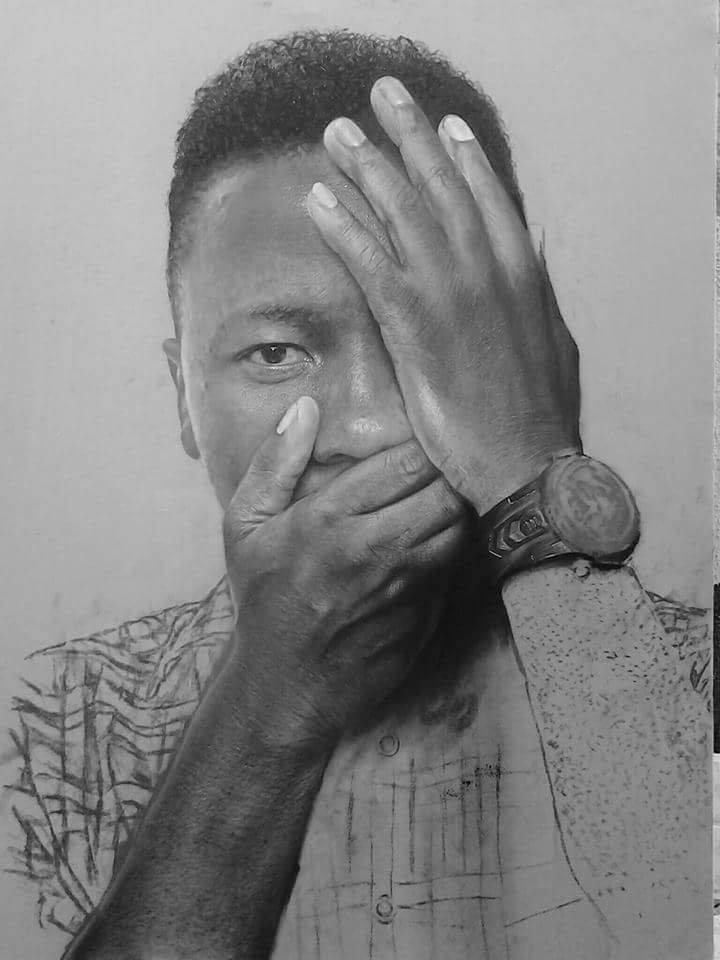
Hidentity
Charcoal on canvas
Abuja, Nigeria
More info
You choose who you are on social media, either your identity or Hidentity.
Eze Marigoretti Chinenye
Nigeria
In my Igbo culture, the traditional philosophy holds communication in high regard,
but the representations of womanhood in Igbo proverbs are mainly negative:
women are portrayed as being senseless, morally debased, devilish, childish,
and weak, only the aged women are being respected.
These circumstances have convinced many women to become silent, submitting to whatever
they are referred to. They can do nothing but to remain silent and endure without aggression.
Gladys Kalichini
Zambia
Exploring the erasure of women’s narratives from Zambian history, women’s stories
being marginalized and erased from historical accounts of important events, as in the case of
Julia Chikamoneka and Alice Lenshina, women held in the collective memory of Zambian history.
‘Erasing erasure’ evokes the undoing of the process of death (a metaphor for erasure),
and of crystallizing people and events in time.
Chelsea Coon
United States of America
The artist laid under a plastic sheet for an eight hour duration performance.
Through subtle movements over intervals of time, she learned how to exist in this space.
She examines the body as a site for potential, and asserts the probability
for it to be as expansive as the universe itself.
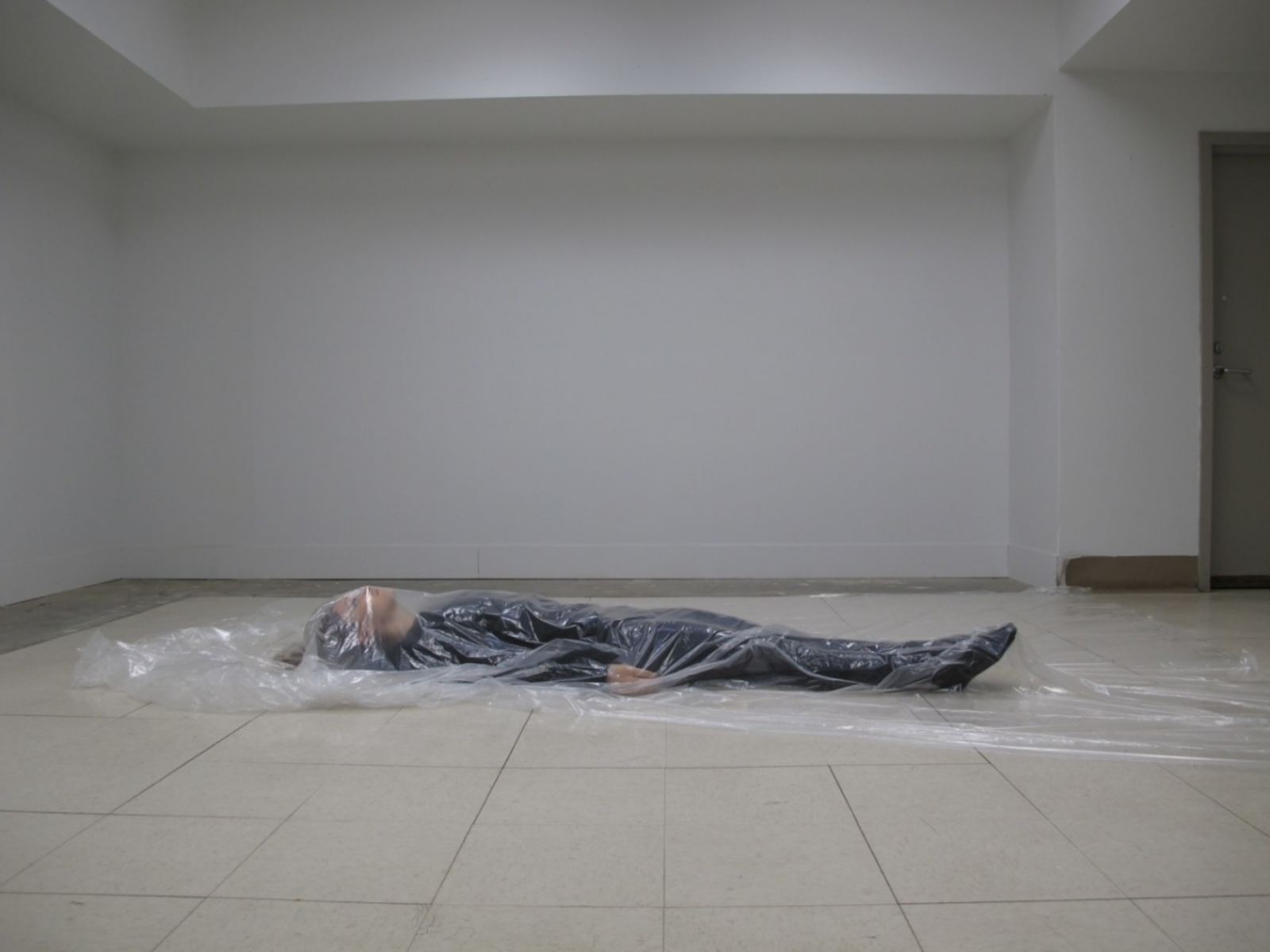
Untitled (Breathing)
Performance
New York, United States
More info
Duration: 8 hours (non-stop)
Photo Credit: Marilyn Arsem

Untitled (Breathing)
Performance
New York, United States
More info
Duration: 8 hours (non-stop)
Photo Credit: Marilyn Arsem
Kristina Rutar
Slovenia
Ambiguity of the form.
The sculpture breathes an unique dichotomy between the space of shelter and
the space of unlimited freedom.
The forms are growing and breaking free.
They come to life in front of the viewer through the created tension between these
conflicting poles. It seems as if the abstract forms will soon rip out of their limited space
and fully live somewhere else, away from the viewer's eyes.
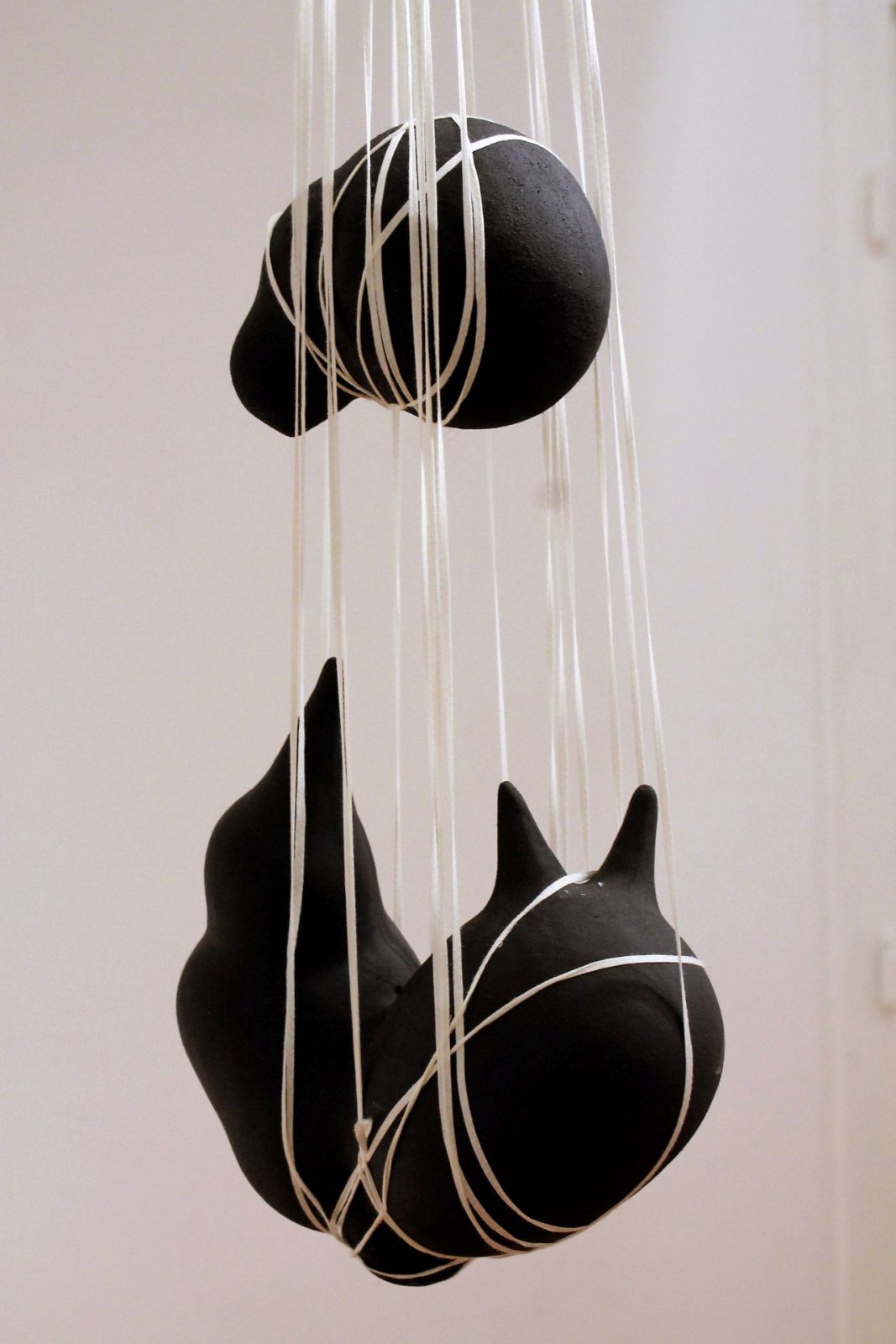
Med-fazen
Ceramics
Ljubljana, Slovenia
More info
The main characteristics of work Mèdfázen are the ambiguity of the form. On the one hand, the sculptures are presently in a safe, isolated area, covered with white fabrics that protect them. The environment is meditative, the time stops and the form has its own time to grow. On the other hand, the same form can be seen as a cage or a trap for a small, fragile and an undeveloped individual. Unable to move freely, limited to space the woolen lines. However, through the composition of the work, the idea of further development after growth is strongly expressed. The work breathes a unique dichotomy between the space of shelter and the space of unlimited freedom. The forms are growing and breaking free. The work really comes to life in front of the viewer through the created tension between these conflicting poles. It seems as if the abstract forms will soon rip out of their limited space and fully live somewhere else, away from the viewer's eyes.
Raquel Algaba
Spain
My work mirrors the human mind. The unspeakable, or what we don’t say.
The figures are playing hide and seek between structures. Just like what our mind does with images
– everything seems to be blurred and suddenly collapses into small gaps,
or we are being presented with forms we cannot recognize.
Konrad Peszko
Poland
A representation of action in a framed community and limitation of freedom.
Birds in autumn form huge flocks where their behavior and action is synchronized,
The birds behave as part of bigger organism.
The video shows starlings draw geometric patterns on the sky. Their movement is repeated
as a solid linear geometric structure which soon becomes a form of prison.
Emergent Art Space expresses its gratitude to the curator Gadi Ramadhani,
to Alliance Française that hosted the live exhibition in Dar es Salaam,
to all the people who helped in many small and big ways to make this event possible,
and to the artists who believed in this experience and shared their art.
